“Tim, can you get six weeks off, beginning next month? I want to send you around the world, as a tour guide for my next Orbis Nostrum group.” That was Raul, my brother-in-law, whose family business was Mexamerica, the largest Mexican-owned travel agency in the country. Raul had taken command from his father. It was in April of 1973. The Orbis Nostrum was Mexamerica’s high-end luxury tour around the world, going west from Mexico City to Tokyo, Kyoto, Osaka, Hong Kong, Bangkok, New Delhi, Agra, Teheran, Isfajan, Jerusalem, Athens, Paris, and from Paris to Mexico City. In 31 days. And it happened that United Press International, my employer in Mexico City, had six-day work weeks and six-week vacations; and I was due a six-week vacation.
“And I’m sorry,” Raul added, “but I can only pay you $1,000.” I was earning $115 a week at UPI. And Vange was pregnant with Sabrina, our second. And we had no health insurance.
I said yes. I was 25, living in Mexico City, leading a group of 68 wealthy Mexican tourists around the world in 31 days. And getting paid to do it. And Vange, who could have objected, was all in favor. “Do it. What an opportunity.”
Three weeks later I met the group in a fancy meeting room in the Maria Isabel Sheraton, overlooking the Angel of Independence on Reforma, the Thursday before our Tuesday departure. I was buoyed by about two hours of Raul’s pre-trip training. For example, “tell them to bring strong luggage. Tell them the airlines butcher your luggage, so get new suitcases.” That, so they wouldn’t complain to me about damaged luggage, because I’d warned them. Also, “when in doubt, lie. Don’t ever let on you haven’t been there before. You have the local guides with you to help. Wing it.”
For the group of 68 I had two co-tour-guides, my mother-in-law Eva, and a pretty and amiable young woman from Mexamerica, Antonieta. The group split into two after Bangkok, with Eva and Antonieta taking 38 of them through Singapore and Hawaii and then back to Mexico City. I took 30 of them on to India and the rest of the round-the-world tour. If you haven’t read anything else I’ve written about her, you should know that Eva was a wonderful person, warm, always happy, and a delight to travel with. Our relationship was not like normal in-laws. We really liked and appreciated each other, always.
Japan
It started with a really long flight. Back in 1973, commercial airliners couldn’t get from Mexico City all the way to Tokyo. We took a Japan Air Lines flight, with great service, that had to stop in Anchorage AL to refuel. And then, Tokyo, Hotel Imperial, terrible jet lag and me up at 4 in the morning — it was already daylight outside — and I walked for miles around the heart of Tokyo before breakfast. That first day was one of the longest of my life. I’ve never had worse jet lag and never been so tired. But we loaded the bus at 9 am for the tour of the city, which I stumbled through like a zombie. Thank goodness the local guides did everything, and spoke Spanish too, so I didn’t have to translate. We visited markets, and temples with beautiful gardens. And stores. We had a meal in a market. Our tour guides, thoughtful as they were, went off the city tour agenda to accommodate my tourists who wanted to look at Japanese pearls and jewelry. I was surprised how nice they were about it, given their packed city tour. They helped the driver park the bus and everything. In my jet lagged stupor, I bought some pearls for Vange, who I missed terribly.
The day ended, finally, at about nine pm, after a long boring dinner with women in kimonos and what felt like 40 hours of endless Kabuki theater, all of which had me struggling extremely hard to not fall asleep.
I dressed for that first day. Does the jet lag show?
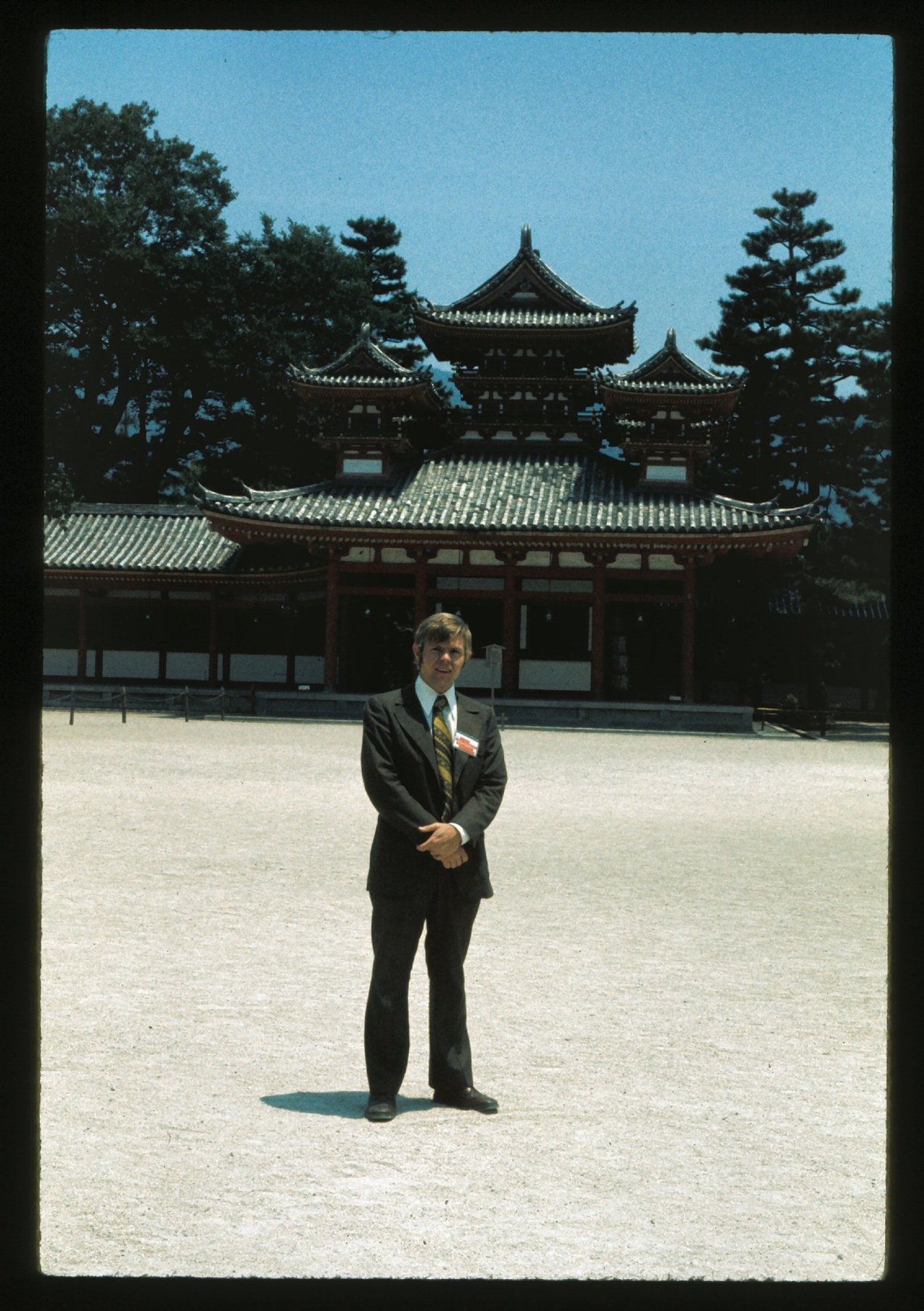
I got to the hotel, asked at the desk for my key, and picked up two envelopes that seemed stuffed with paper. Thank God I was alone at that point, not in a group. I stuffed the envelopes into my day bag and dragged myself into my luxury hotel room. The envelopes contained hundreds of dollars worth of Japanese Yen, in cash. They came from the two stores our tour guides had visited. And that’s where I learned about tour guide commissions in stores. Raul had failed to tell me in advance. “I wanted you to start out innocent,” he told me later. “Tour guides can get too greedy. I wanted it to be a surprise.”
And that’s how, as it turned out, that Orbis Nostrum trip was not only a great adventure; it also paid for Sabrina’s birth, a great Pentax Reflex camera, two tailor made Hong Kong suits, and a lot of jewelry and other gifts for Vange. The $1,000 that Raul paid me turned out to be just the first of two or three thousand dollars I made that month. The Japanese tour guides, long-time associates with Raul and Mexamerica, filled me in about commissions during the next couple of days. They were getting 10% and so were we, they told me. And at that rate, my tourists were paying not a single extra Yen. The stores were happy to offer normal pricing and pay 20% off the top because the buses were like gold to them, tourists in a hurry trusting in great values, and anxious to spend. In Japan, they told me, everybody stuck with the standard 10%. “But that’s not how it goes everywhere,” my Japanese colleague told me. “In most countries they’ll give you more if you ask for more, and add the difference to what your tourists pay in prices.”
Japan, to a California kid looking for exotic Asia, was a let-down. Despite the occasional costumes, the temples, and the dinner shows, it was modern.
I took this picture at dawn the first day, looking back from a Hibiya Park towards the Imperial Palace, our hotel.
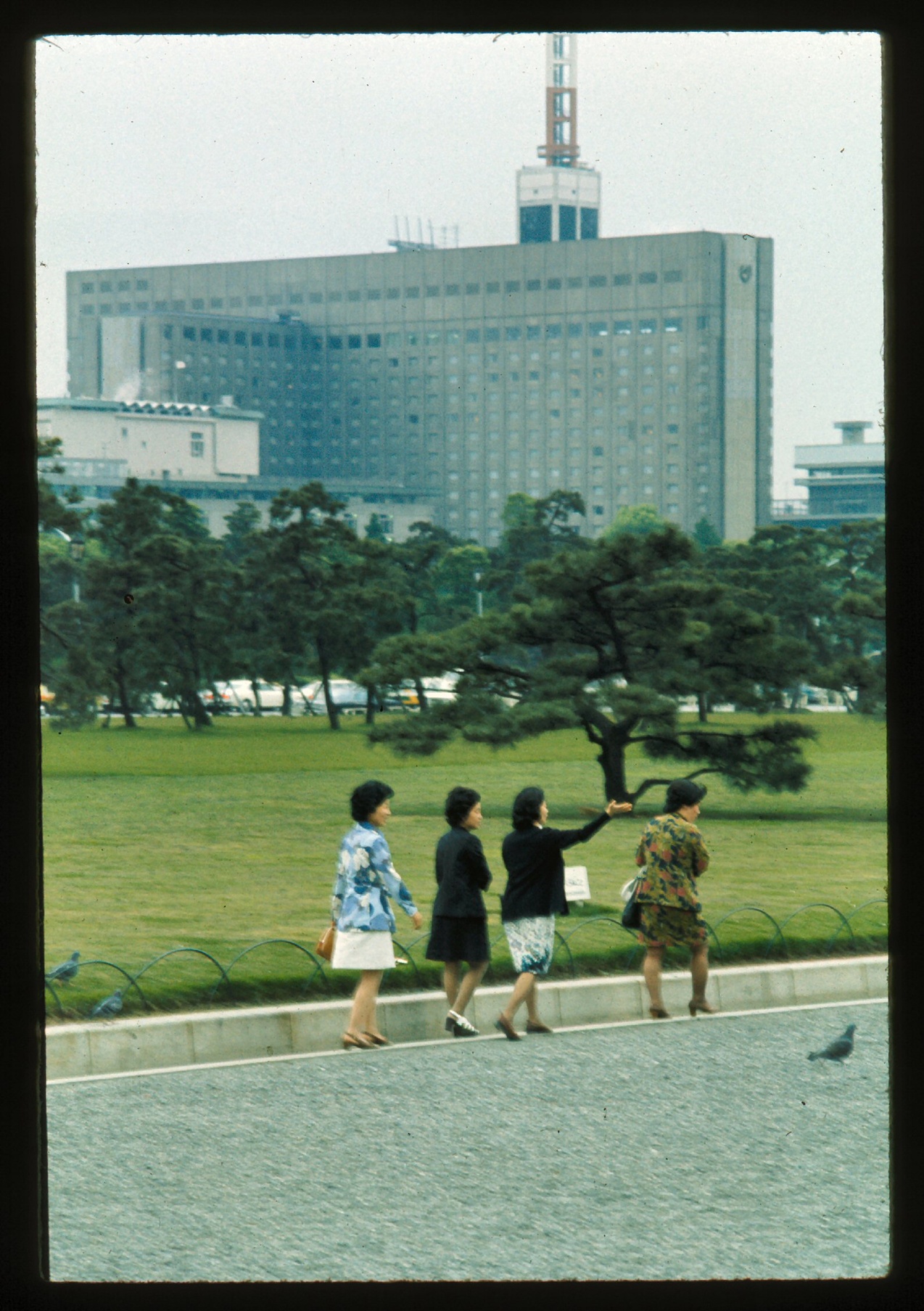
That first morning, at dawn, my walk included the gates of the Imperial gardens.
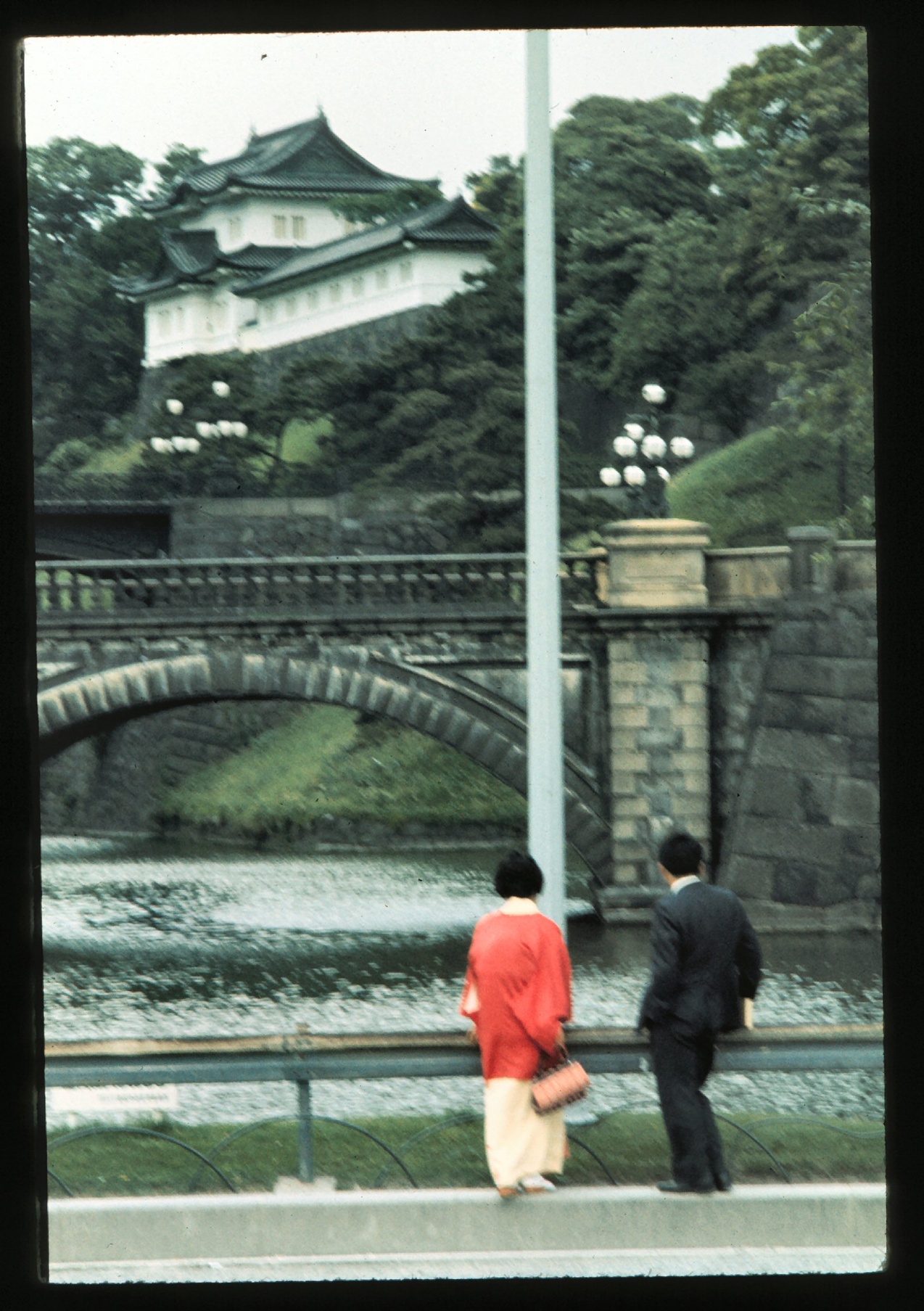
She was one of our two Spanish-speaking tour guides in Japan. With my group around her listening.
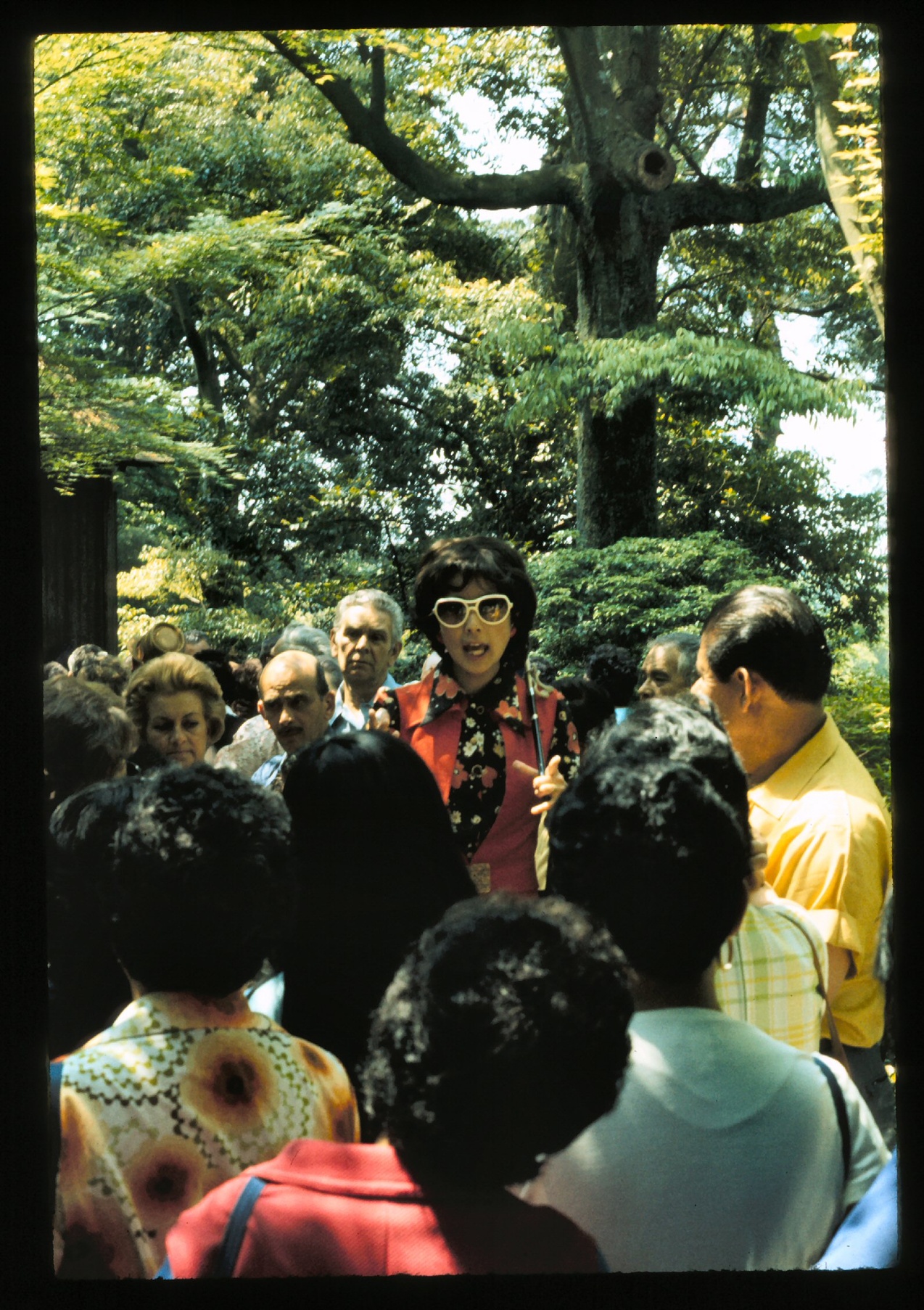
This was from the balcony of a hotel outside of Tokyo, close to Mt. Fuji.
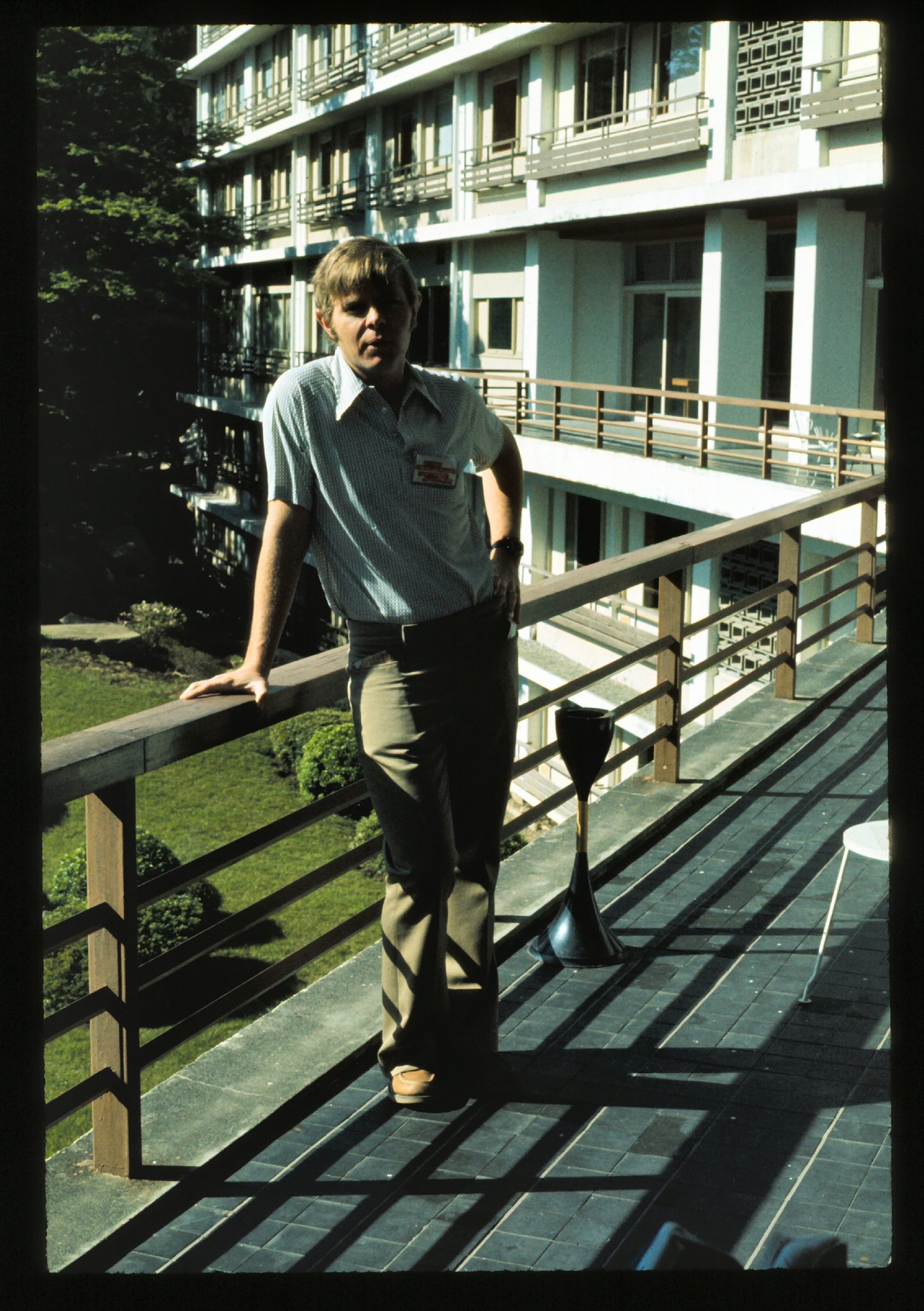
One of many temples.
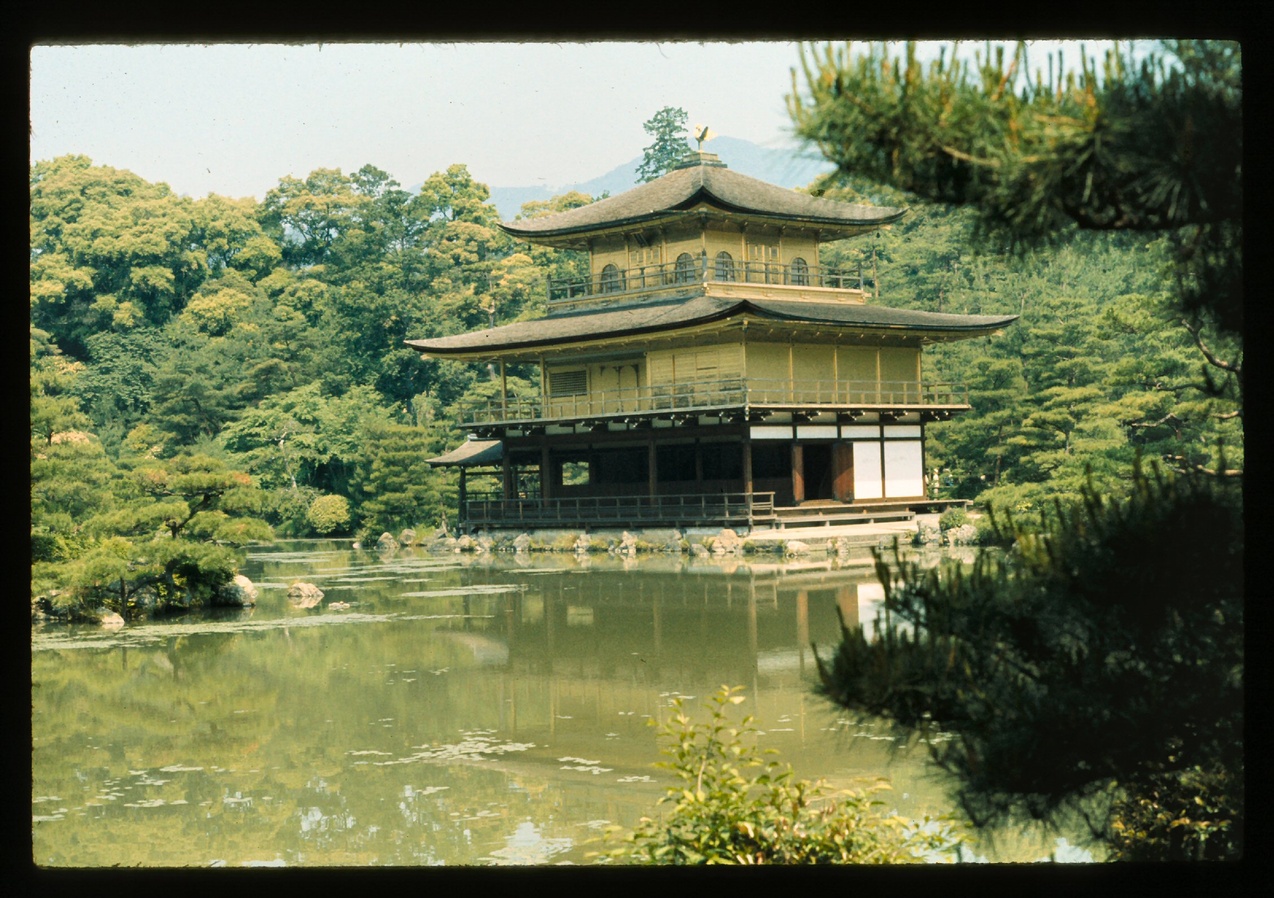
A random street scene in Tokyo

And a shrine to Buddha, outside of Tokyo.
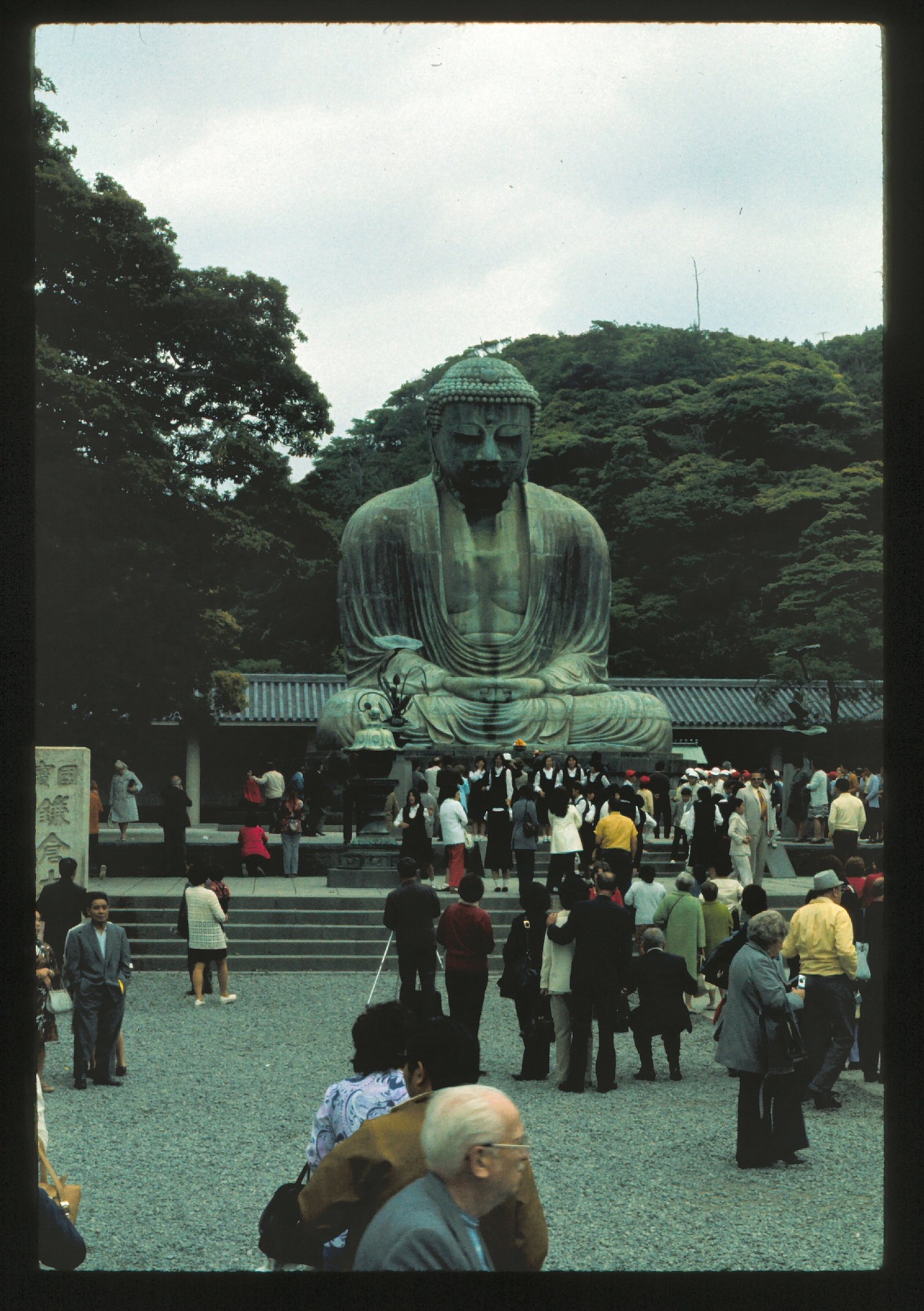
Hong Kong
Hong Kong, however, was, well, the teeming streets, the exotic smells, a forest of neon signs blazing over narrow streets, the Star Ferry back in forth through the harbor to Kowloon, very tall buildings and steamy hot moisture-laden air, a woman smoking a cigarette in a marina full of old Chinese boats, floating restaurants, Asia as I had always imagined it, but better.
Aberdeen, Hong Kong
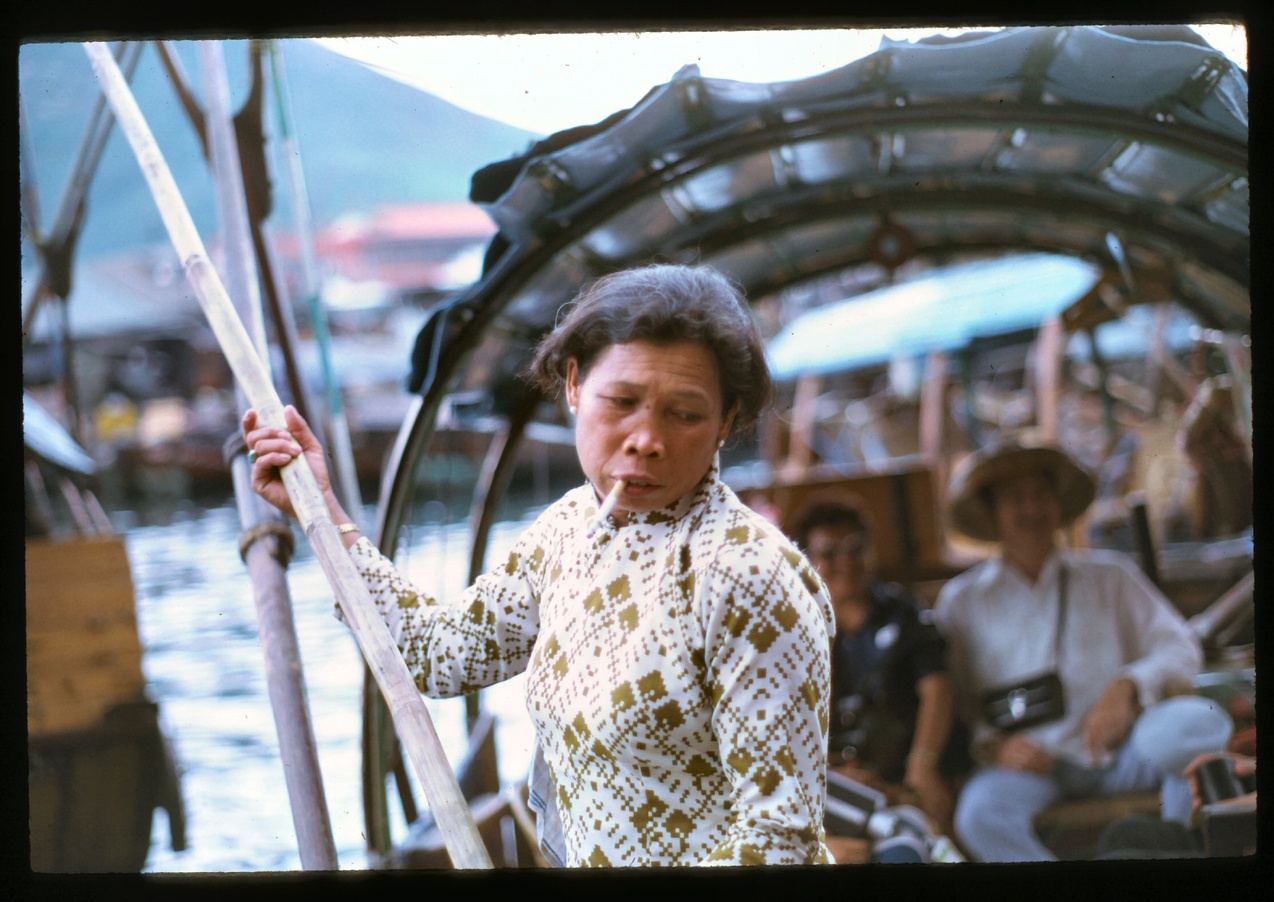
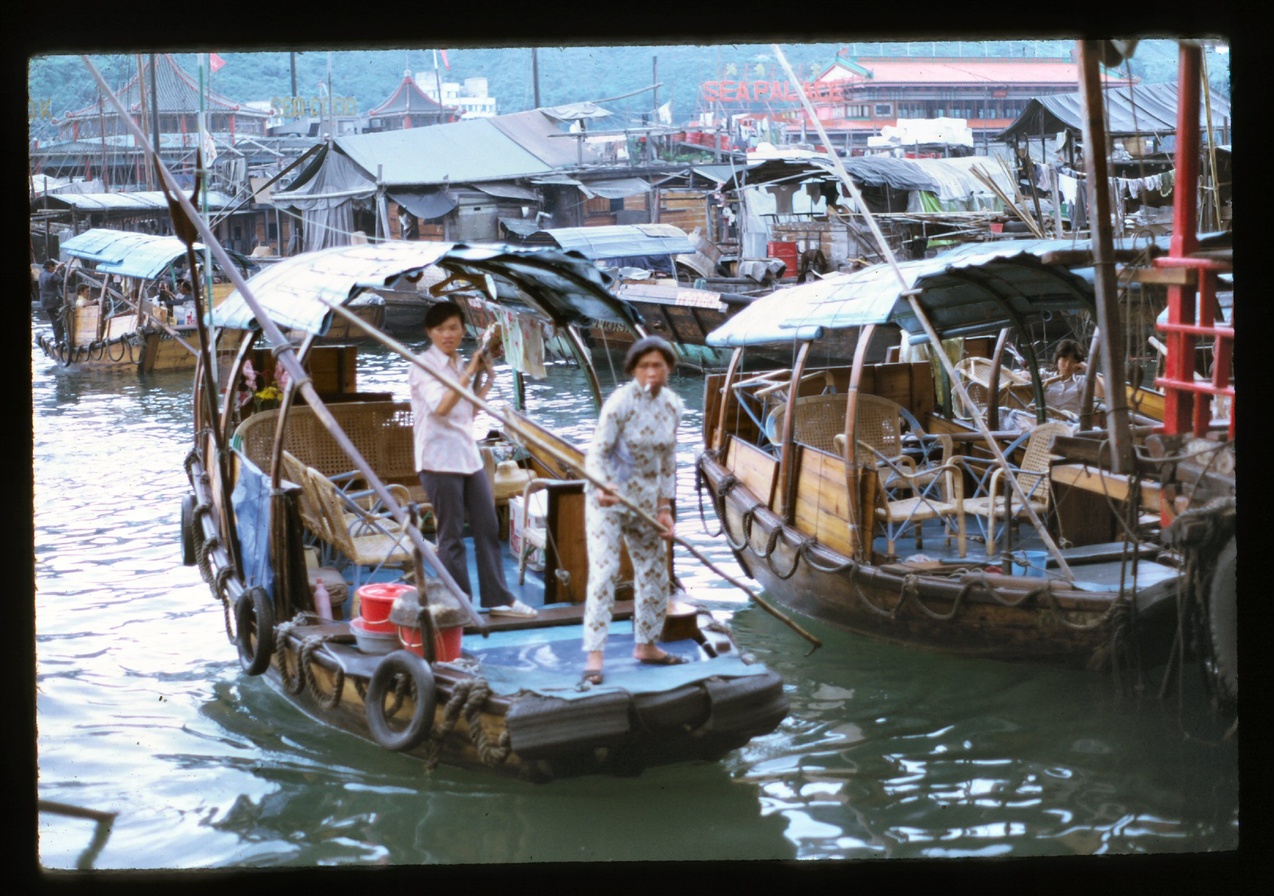
A view from Kowloon back at Hong Kong
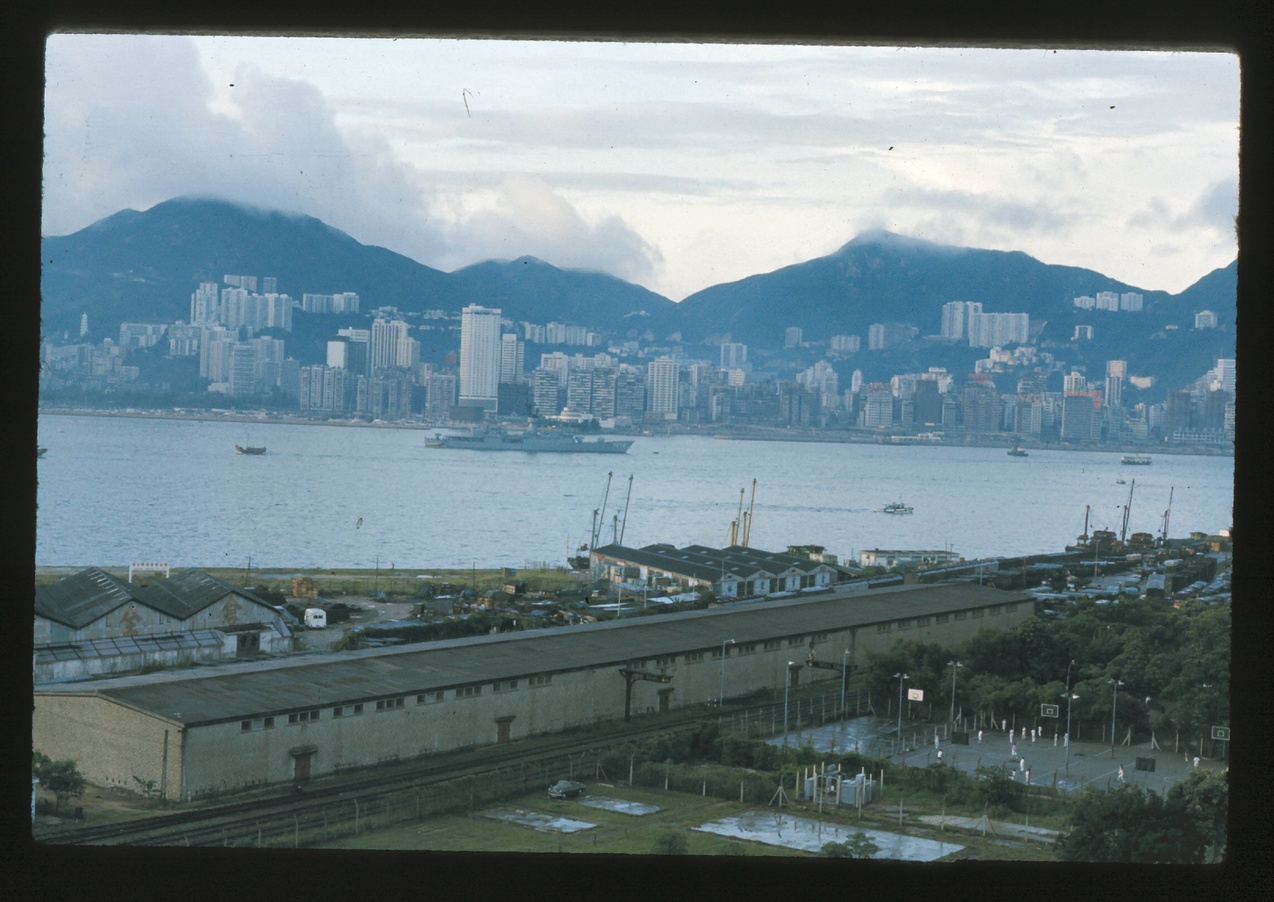
Hong Kong. From my hotel room.
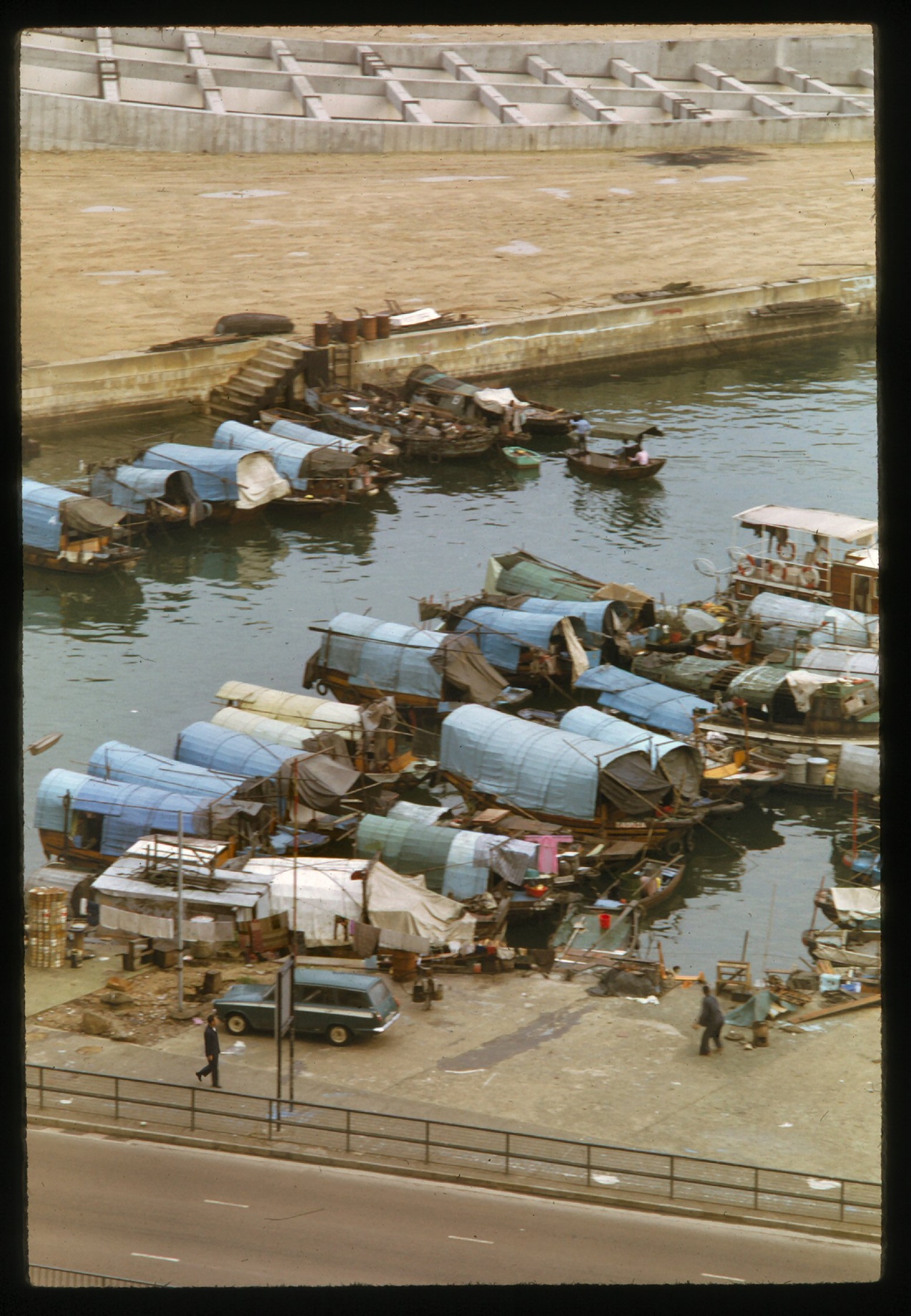
Hong Kong
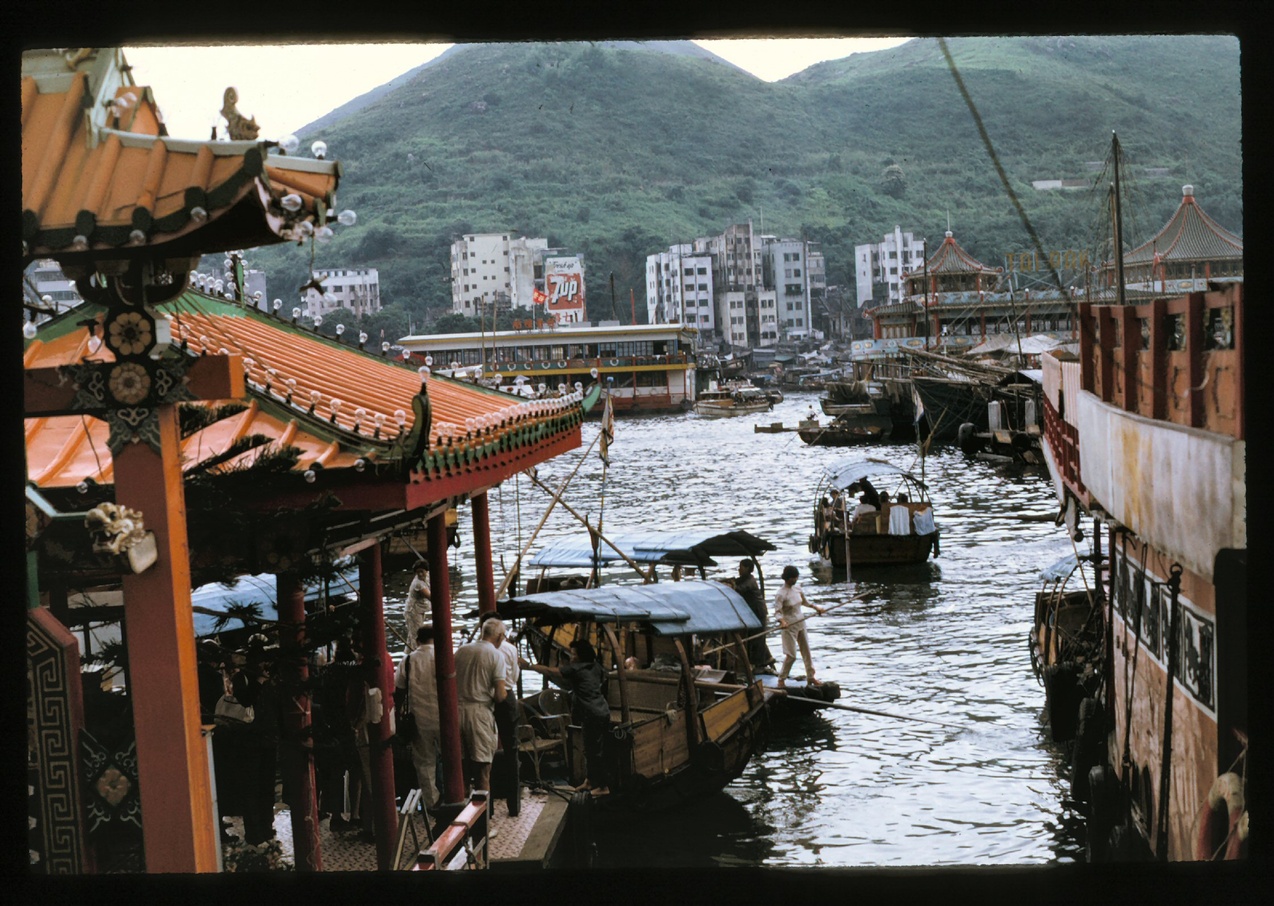
Hong Kong
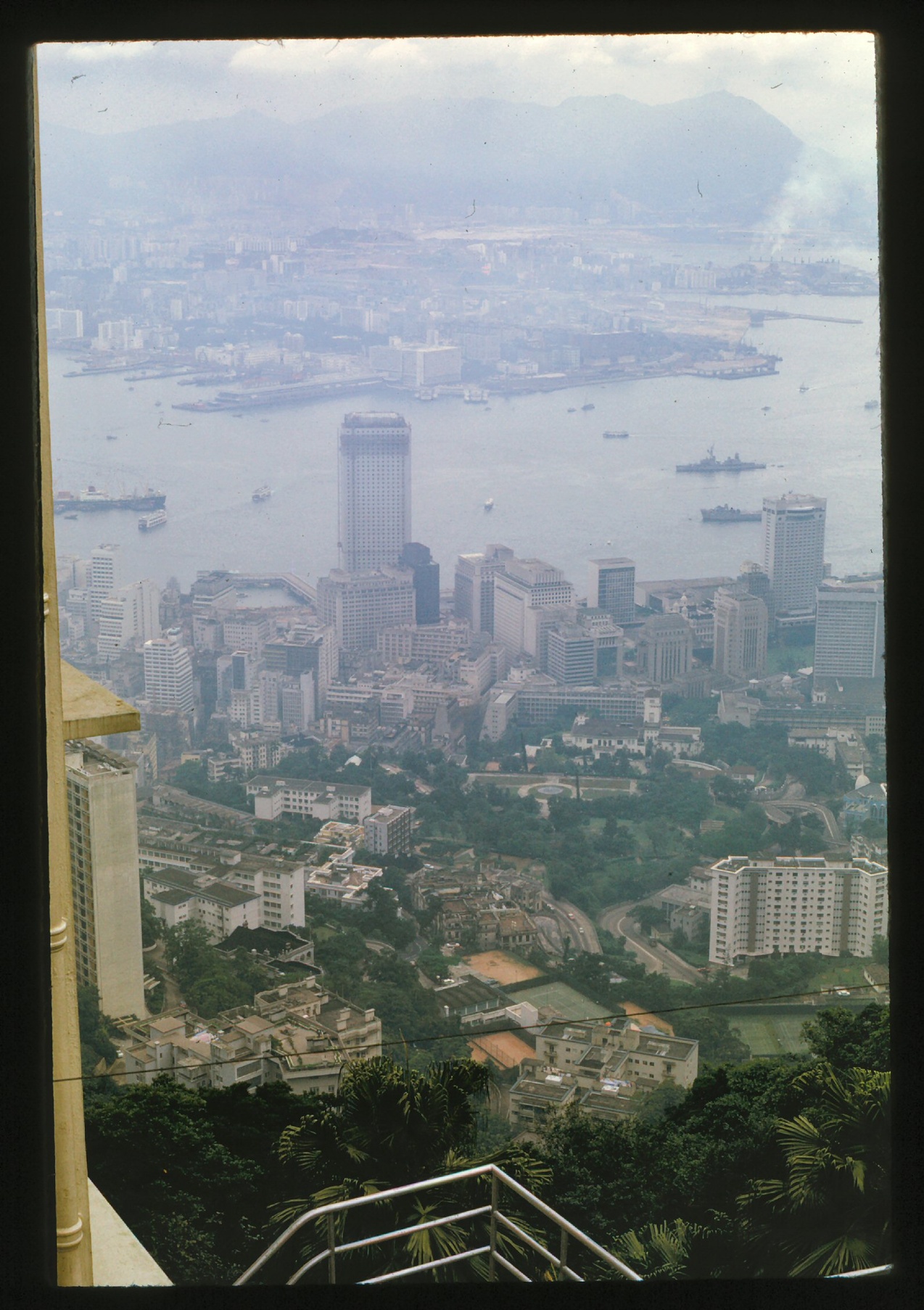
The tour guide shuffle.
Much of the tour was predictable: tour bus times, city tours, monuments and temples, managed mealtimes, and store visits, always the store visits. Dinner theater of the worst kind, all of it supposedly typical and drenched in stereotypes. Chinese acrobats, Thai dancers in ancient costumes. Indian ceremonies. They faded into each other. I wondered if there was a tour group on the planes with us, changing costumes.
Bangkok
Another crowded third-world city, full of traffic. It struck me as a lot like Mexico City. And more buses, and more city tour, and more costumed folkloric dancing.
The royal palace in Bangkok showed the odd mix of millennia tradition with aspirations of 19th century Europe, as in the musical and movie ‘The King and I.’
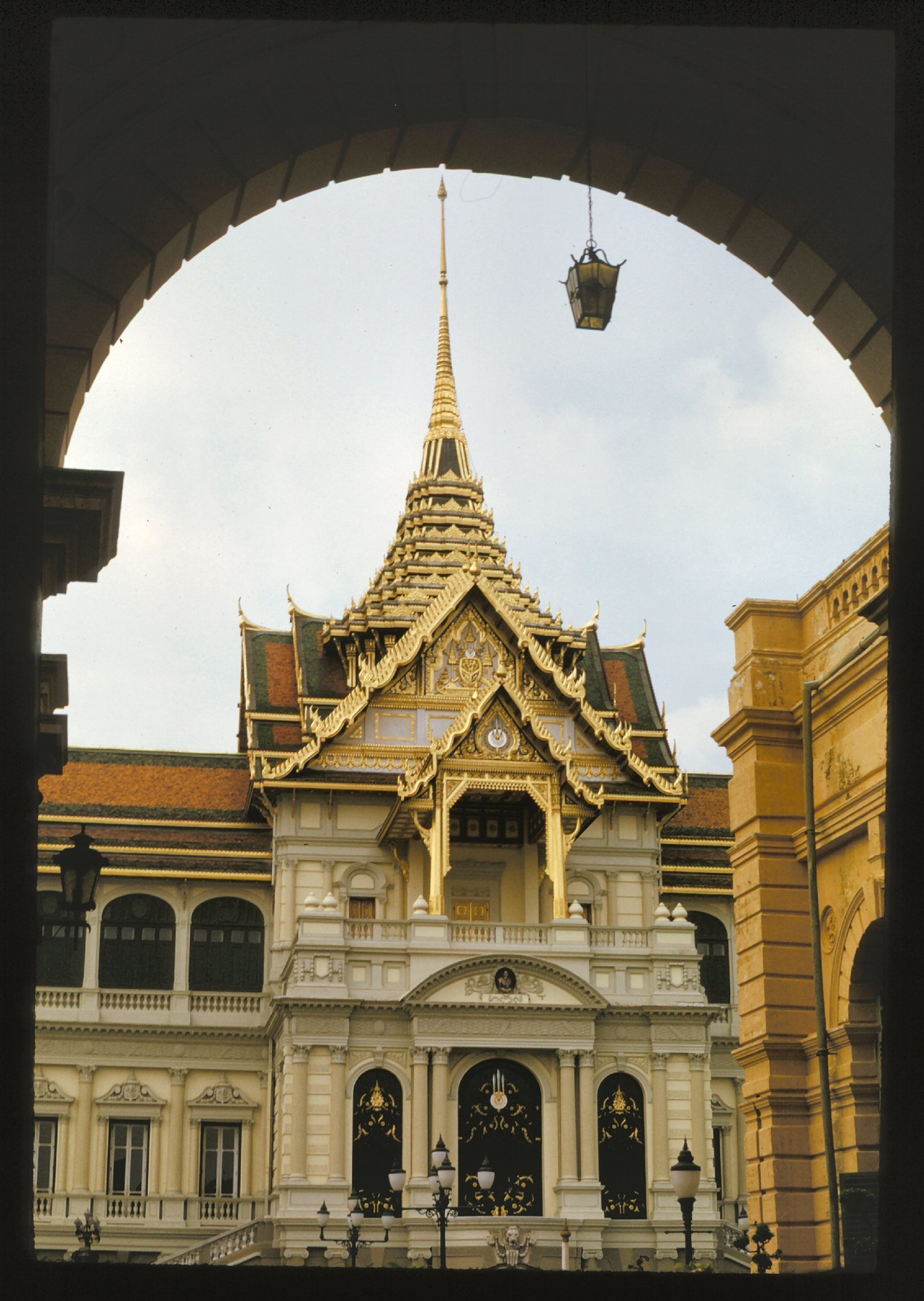
And this picture from the Bangkok royal palace is about me showing off my brand-new Honk Kong suit. Really comfortable very light fine cloth, and of course, bell-bottom pants. It was, after all, 1973. My hair was not particularly long, for me; I’d had a hair cut before we left.
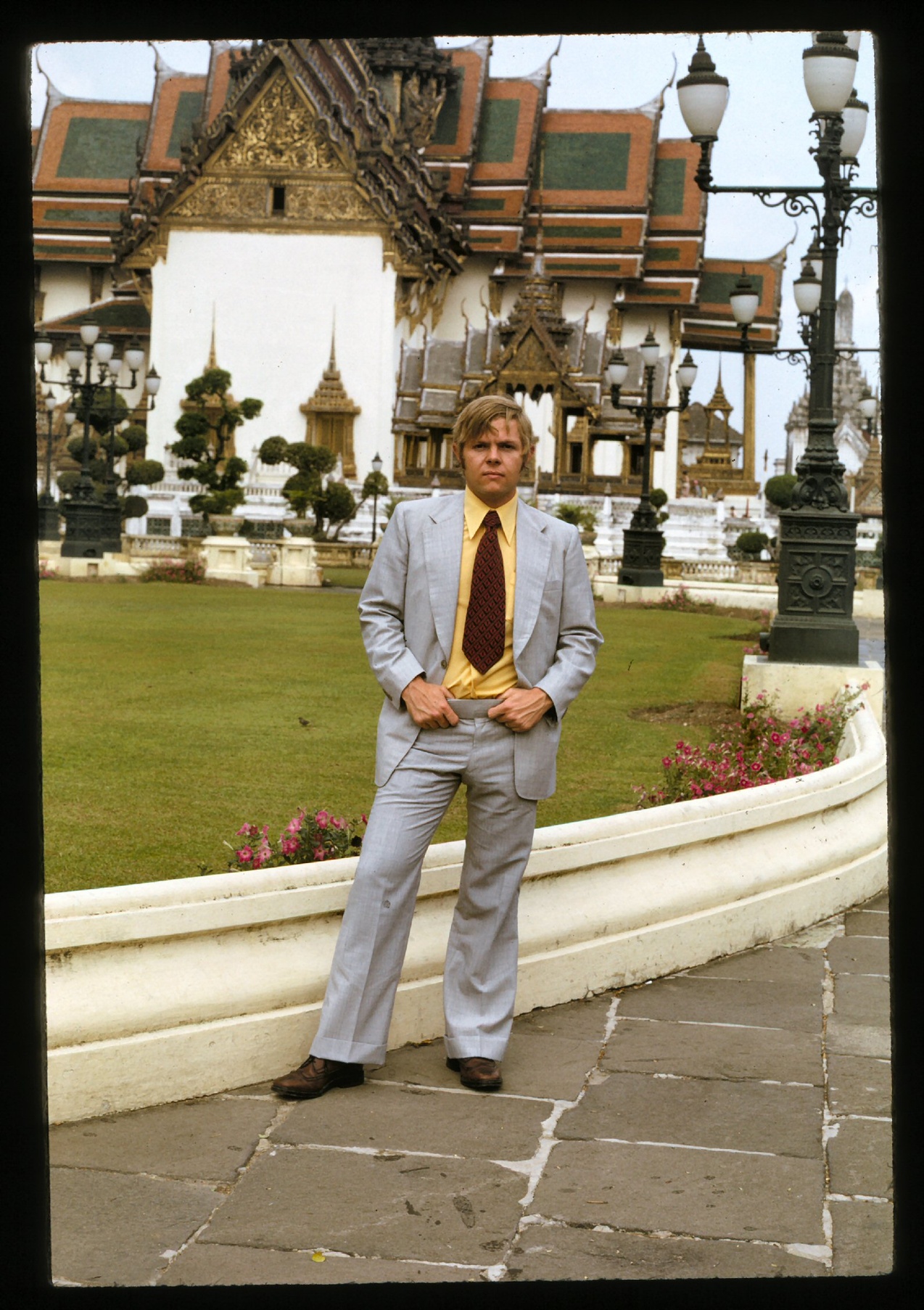
India
We got to Delhi at night. The other side of the world. Honking, crowded streets, crowded sidewalks, livestock, smog, and oppressive heat. The smells of exhaust, livestock, feces, charcoal, spices, and struggle, all mixed. As far from suburban California as I’ve ever been.
Outside a monument in New Delhi
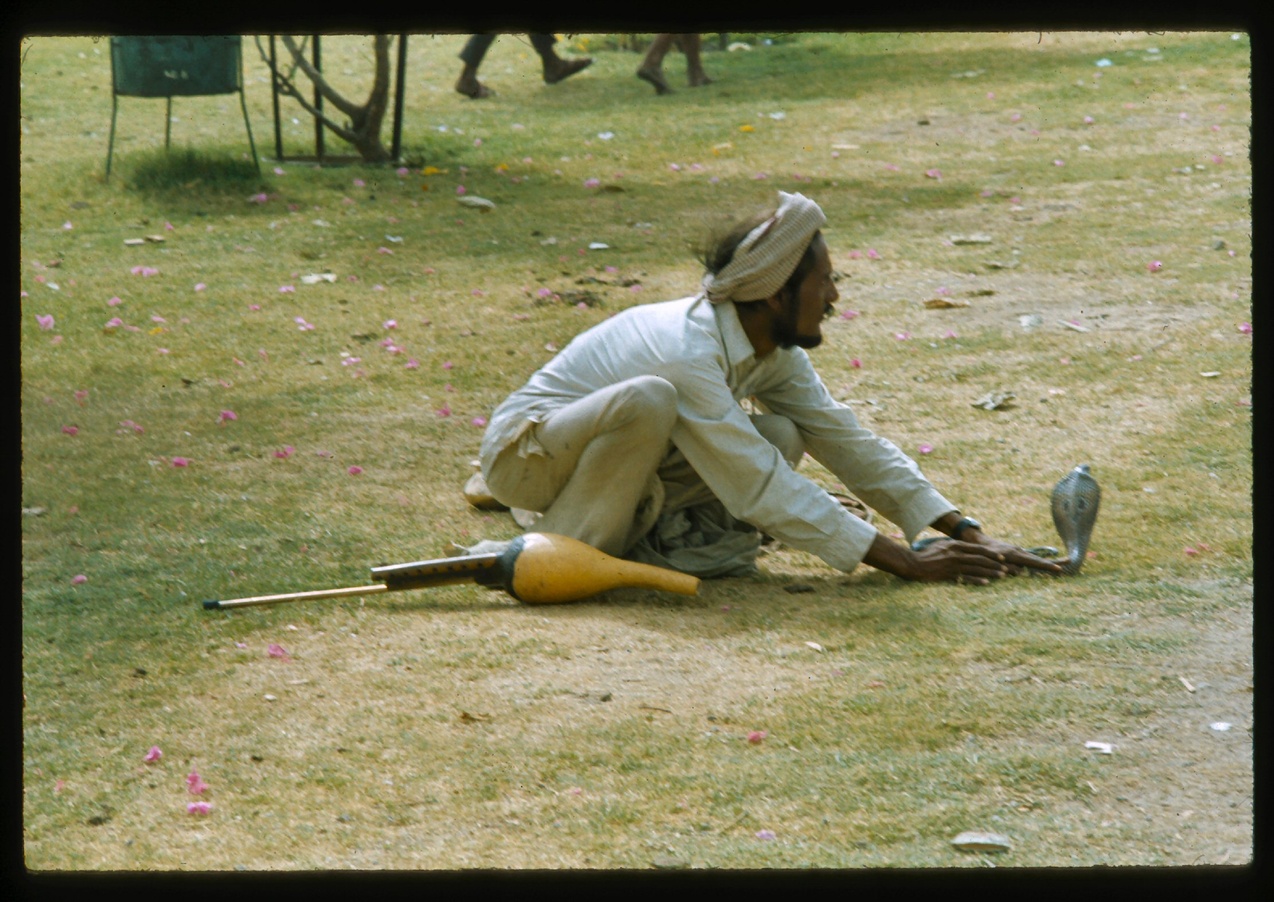
New Delhi
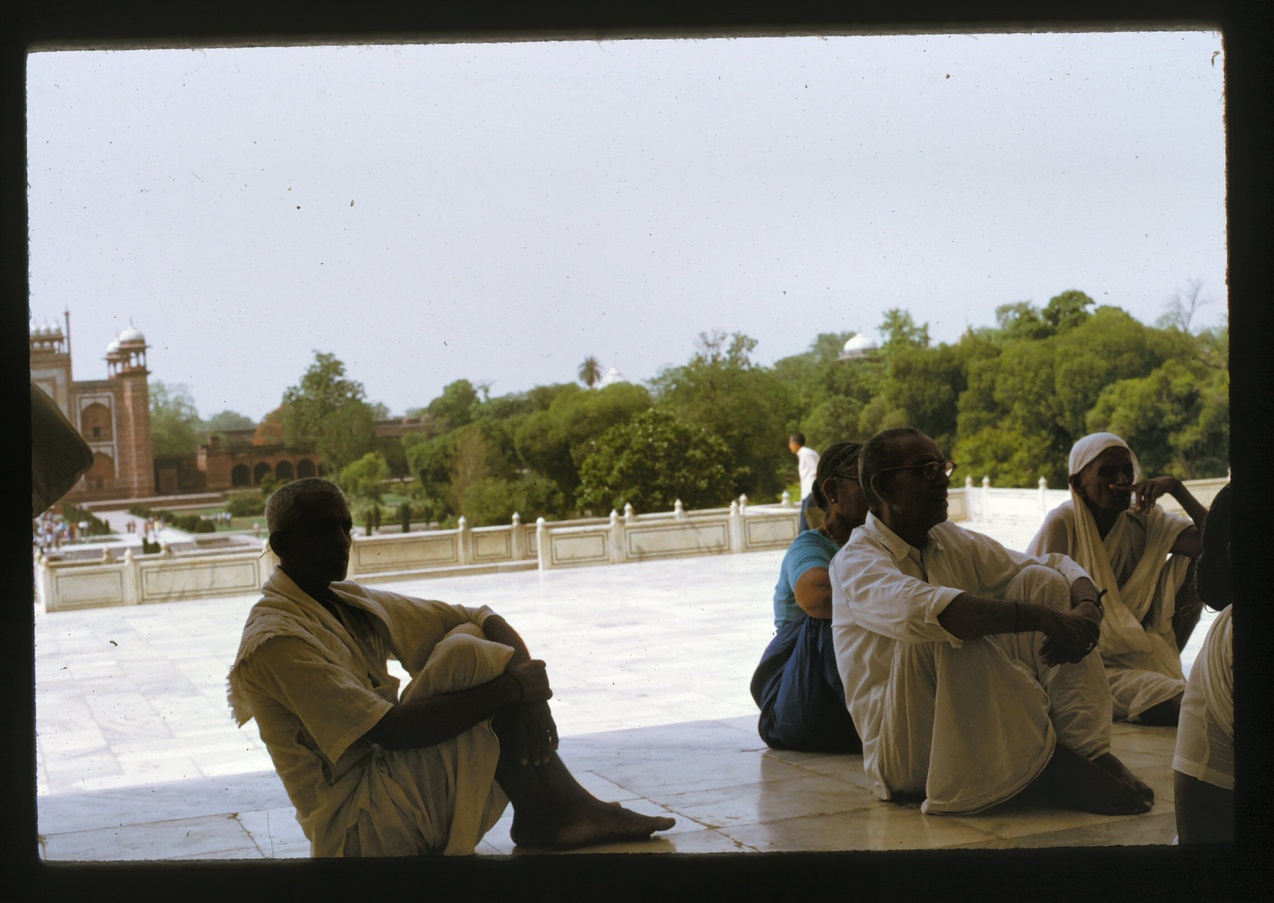
New Delhi
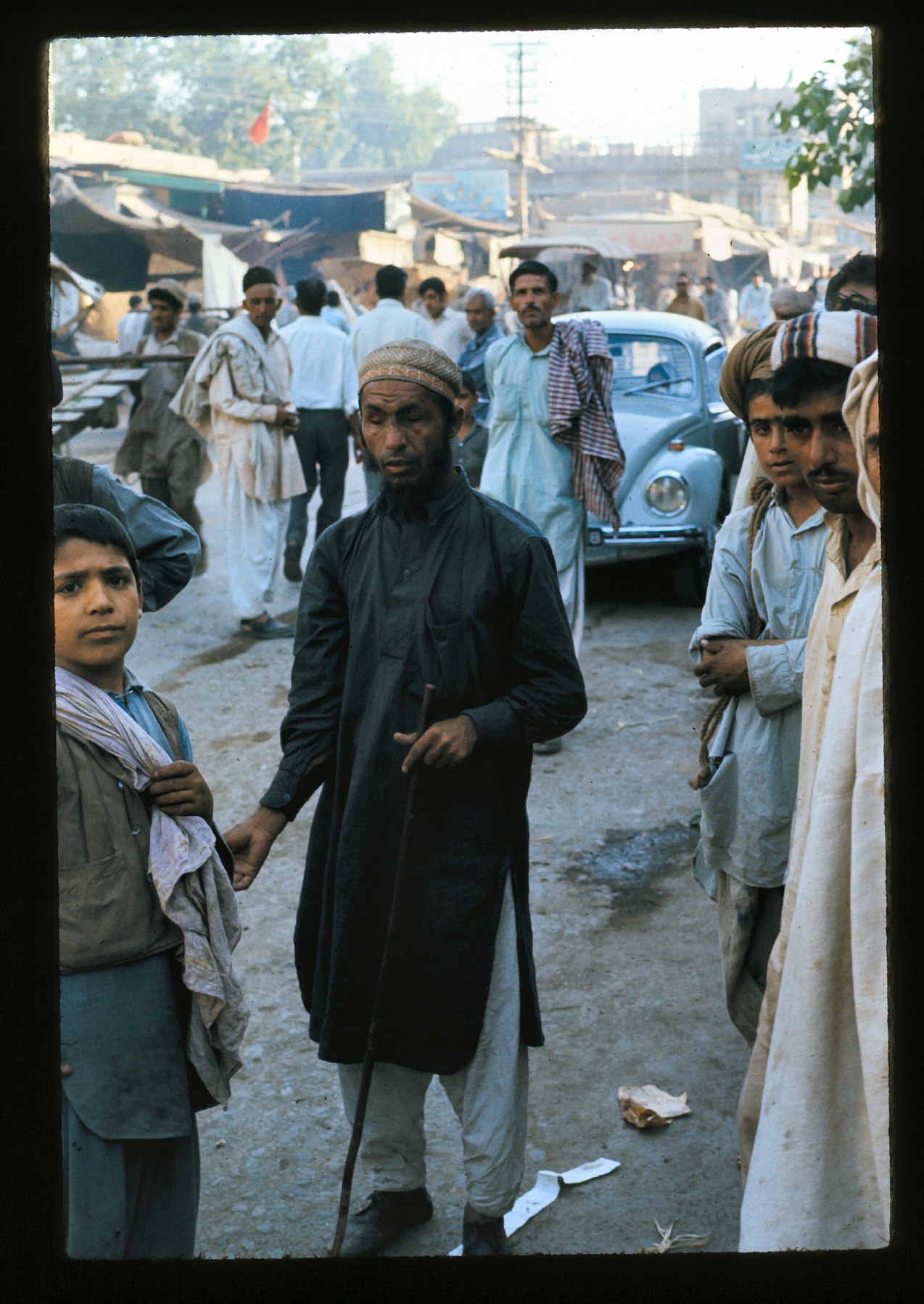
New Delhi
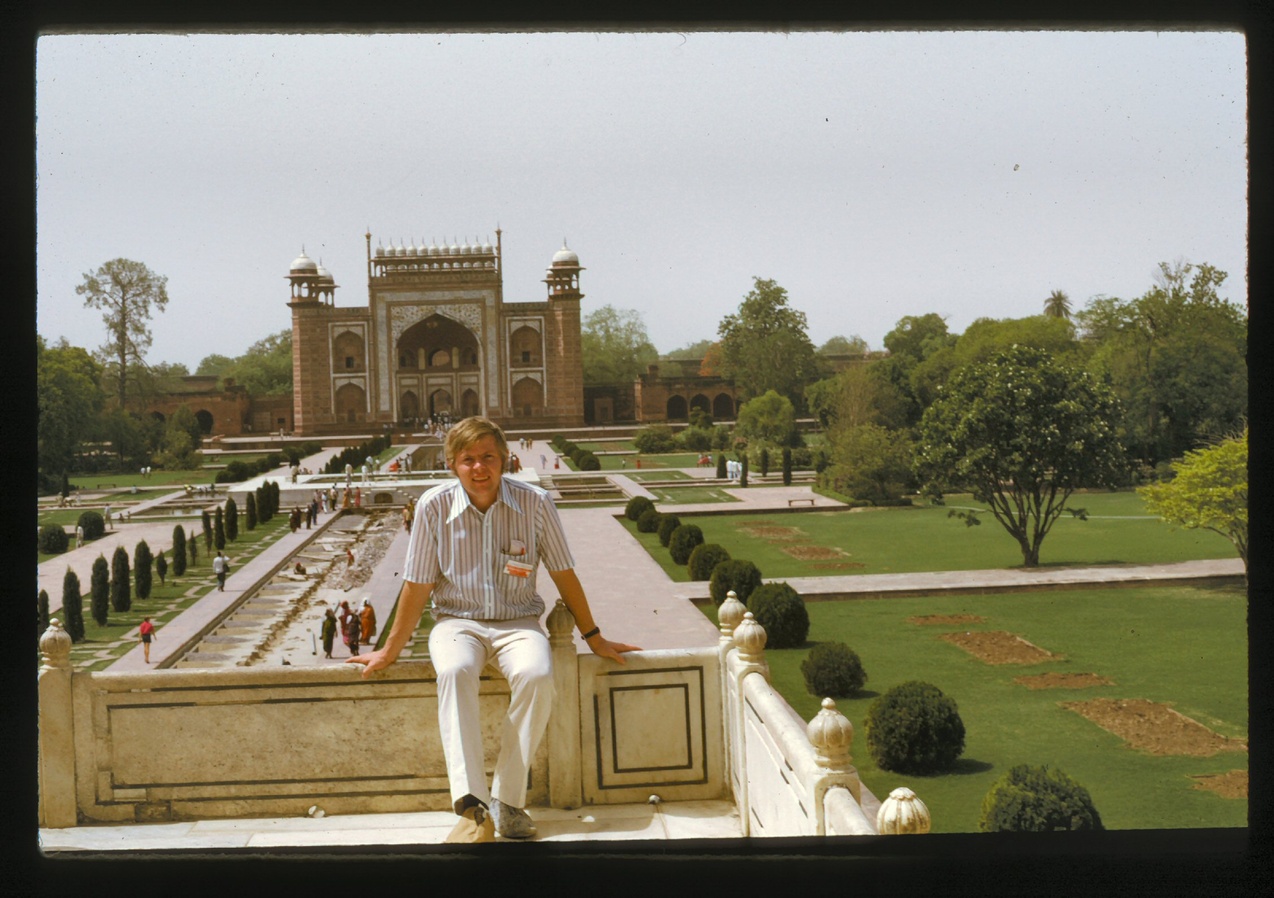
However, the Taj Mahal. They left us there for hours that seemed like minutes, It was so hot the tourists ran from shade to shade, literally. Beggars were everywhere. But the Taj Mahal is as majestic as El Capitan and Half Dome, huge, a proof of some kind of higher being, just as it stands there.
I’m told that the Taj Mahal is now blocked off. The last person I know who visited, maybe five years ago, said it was walled off, with admission severely limited. And outside the mobs of tourists and local people selling to tourists were horrible.
The Taj Mahal, below, is one of my better pictures. It’s impossible to understand from a picture how big it is.
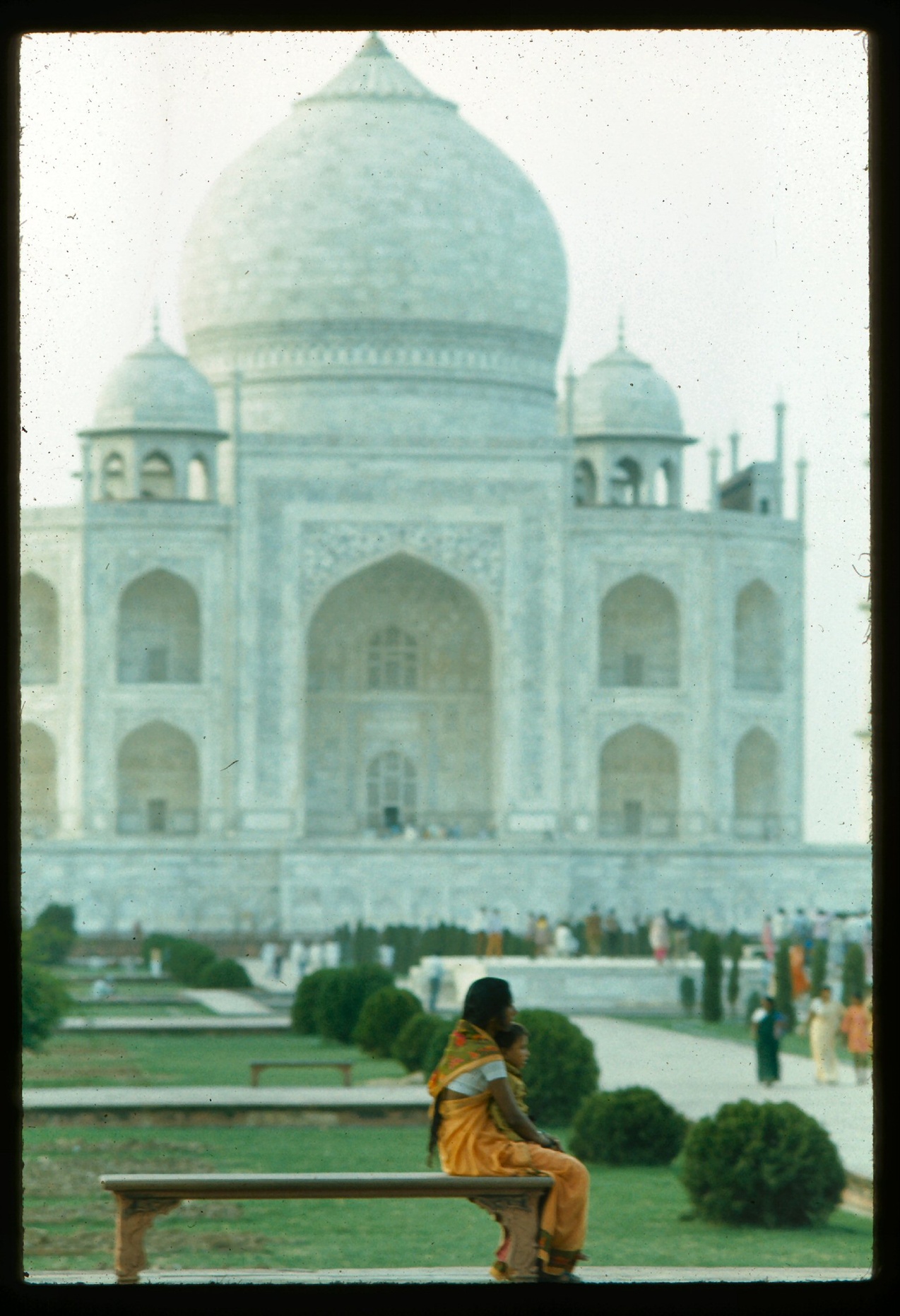
It opens in the back to a dream landscape of ancient India, halfway around the world. The next picture below is the back side of the Taj Mahal. What you see here is heat. Like 110 degrees. Some of my group ran from shade to shade, like people do from shelter to shelter in a rainstorm.
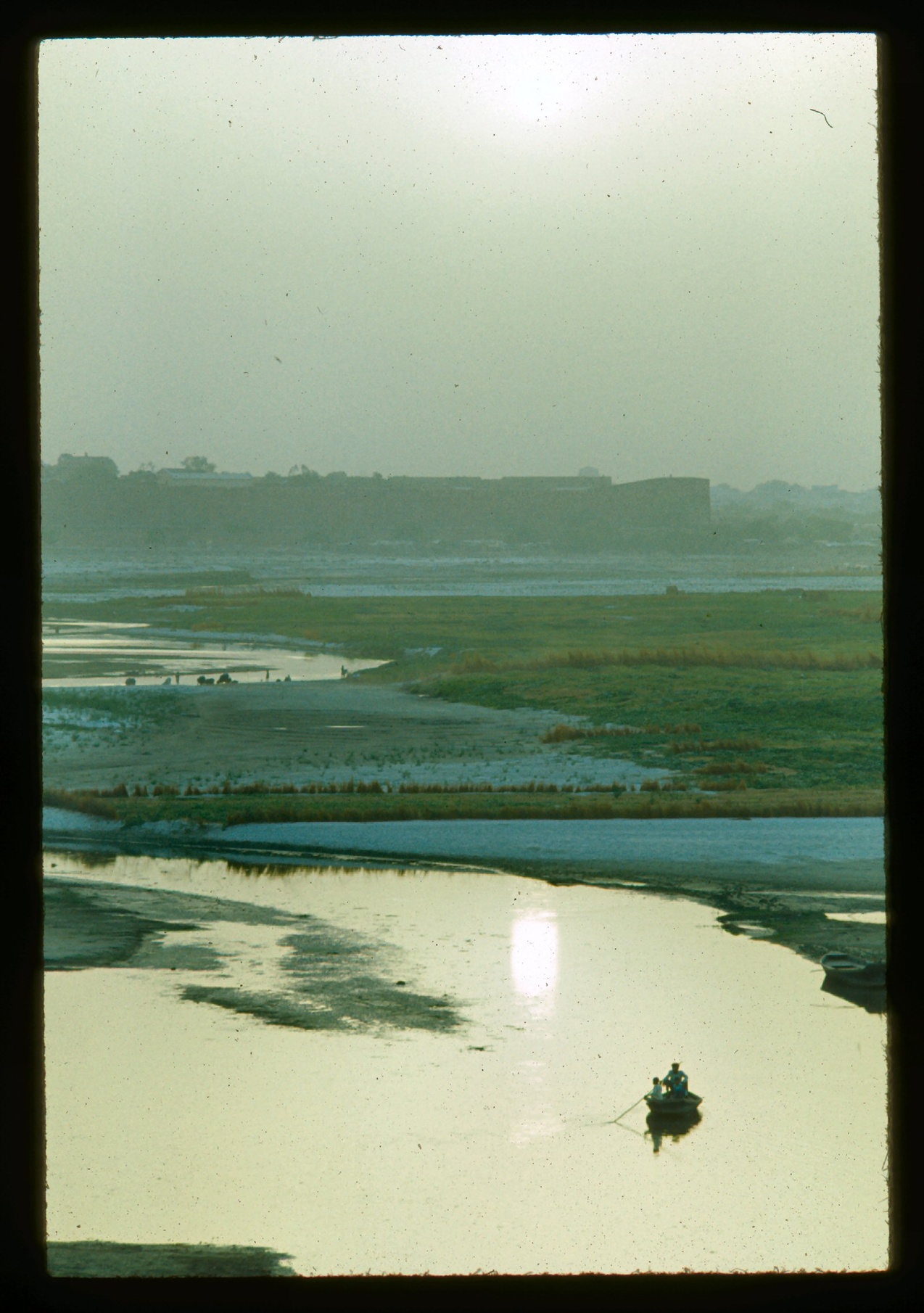
The Taj Mahal in the distance, from the hotel. Hot, hot, hot. Well over 100 degrees.
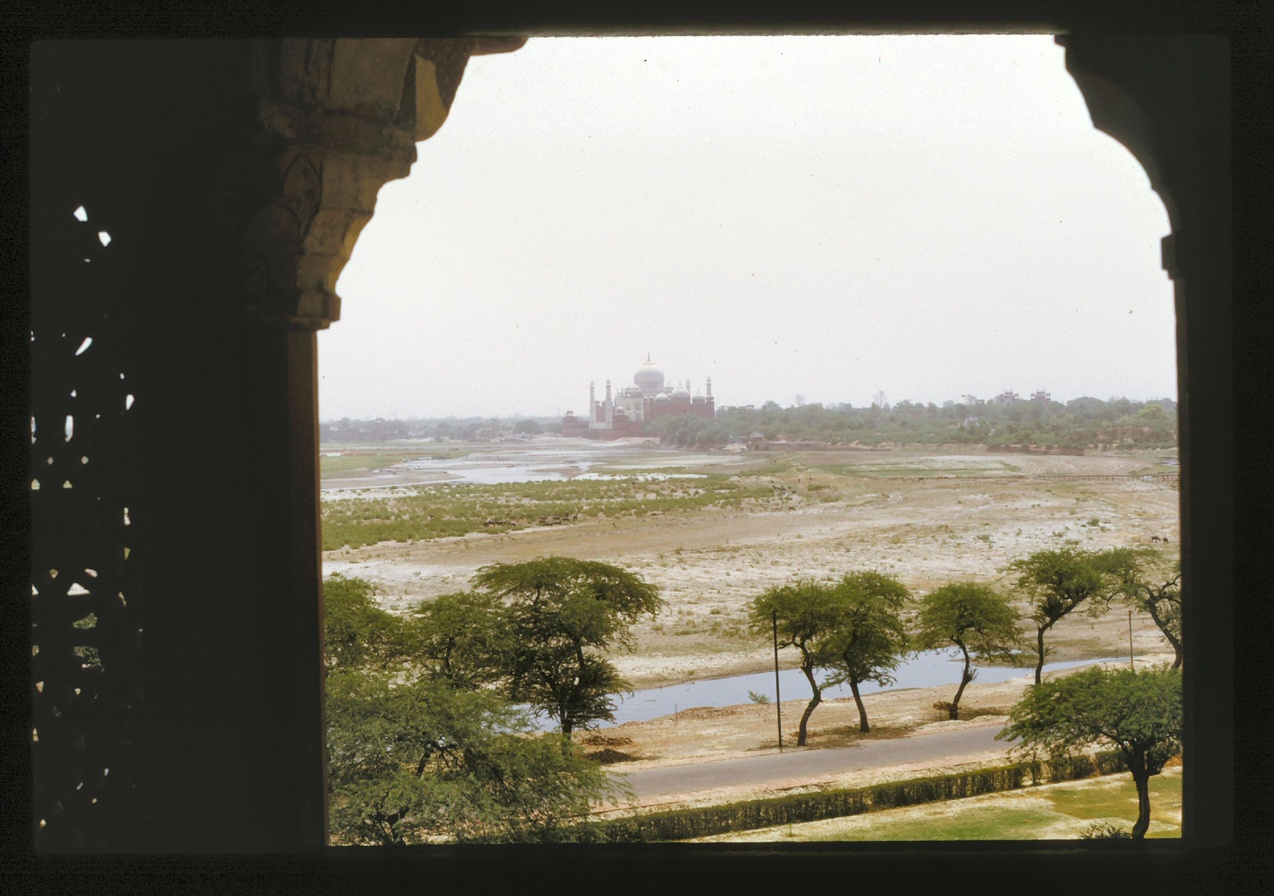
Iran
Iran was still controlled by the Shah. There were US fighter jets in the airport, and US business logos everywhere. Teheran was shopping centers surrounding mosques. Lots of Americans, a whole population of US oil expats. And lots of Americanization. This was six years before the Muslim government took over and kicked Americans out. We visited Teheran and Isfajan.
A view in Teheran:
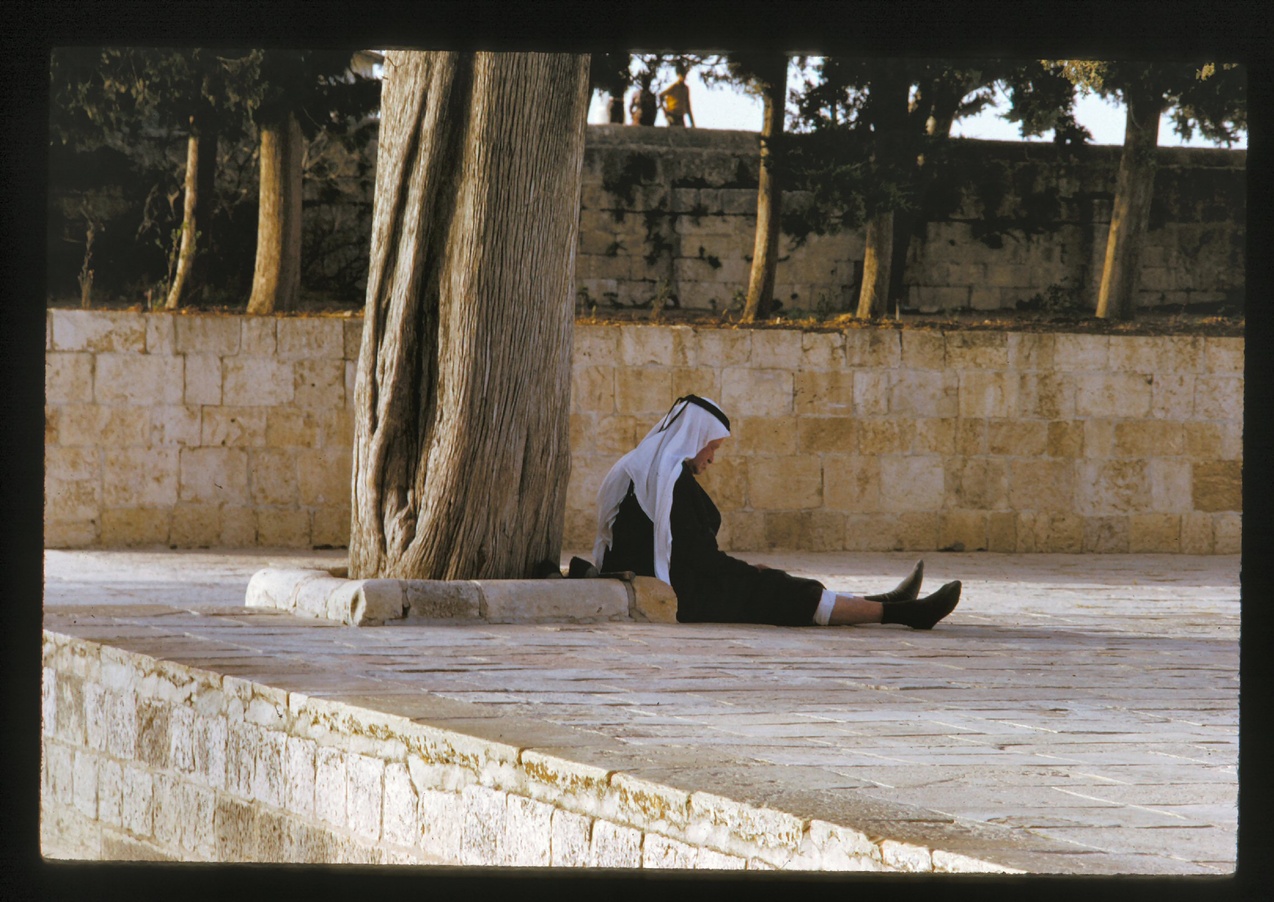
Isfajan
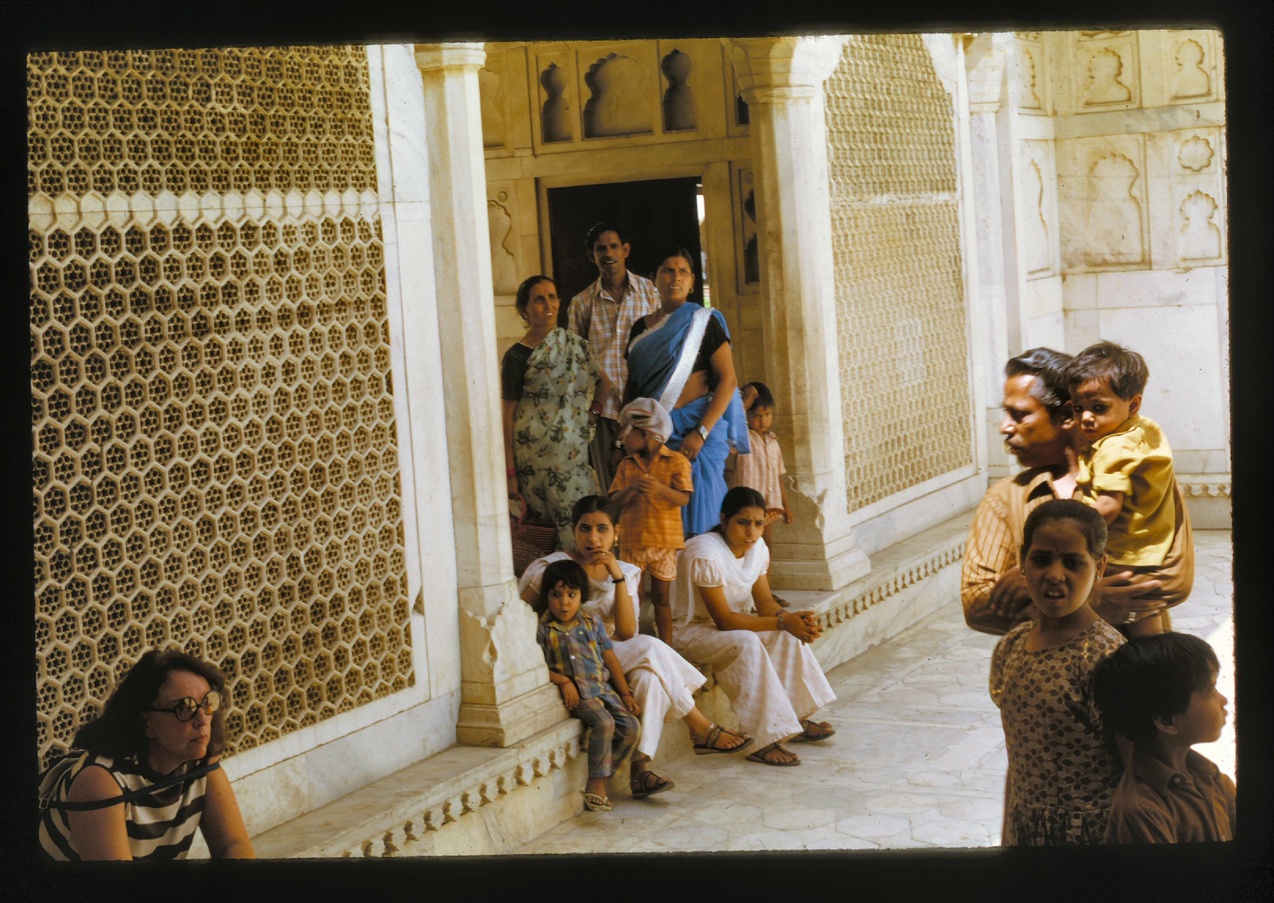
Isfajan
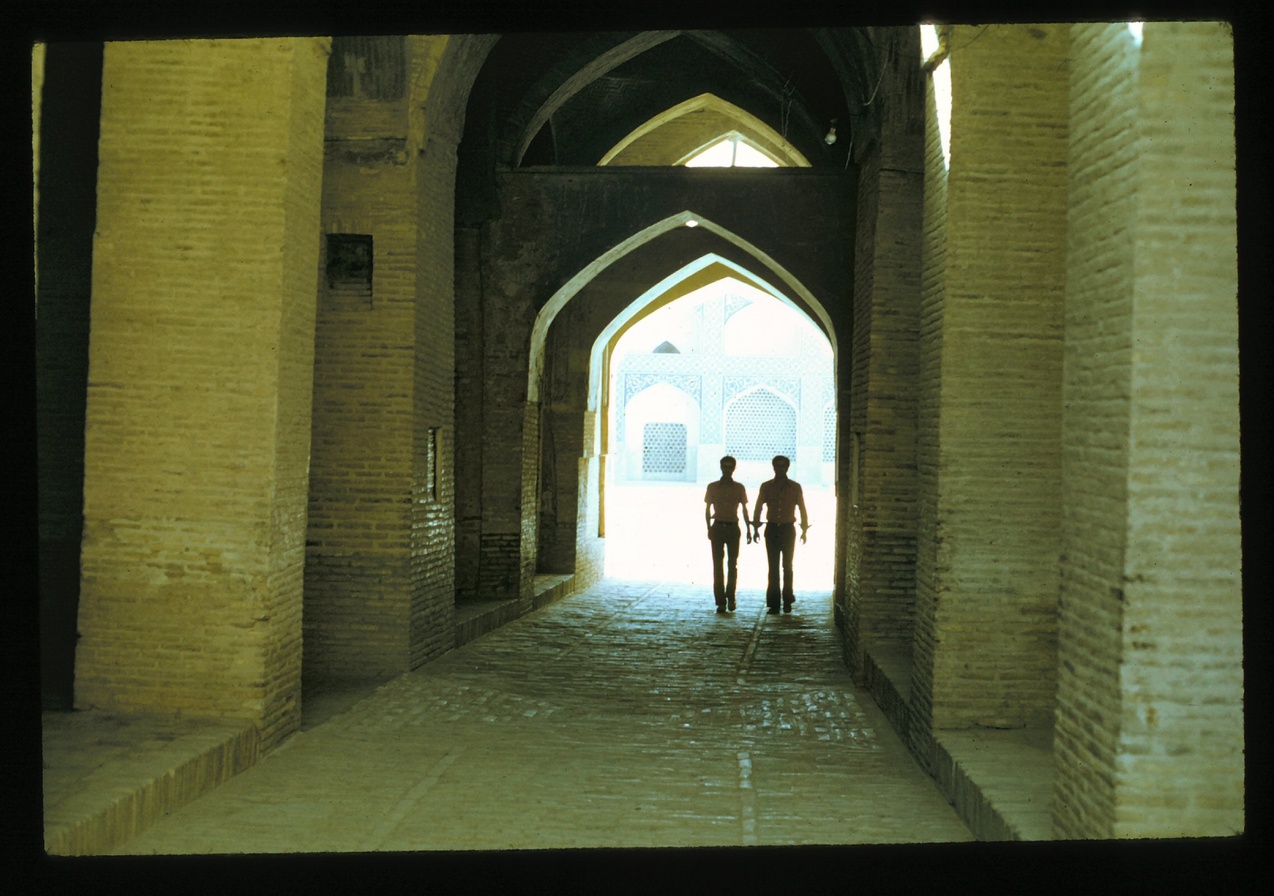
Isfajan
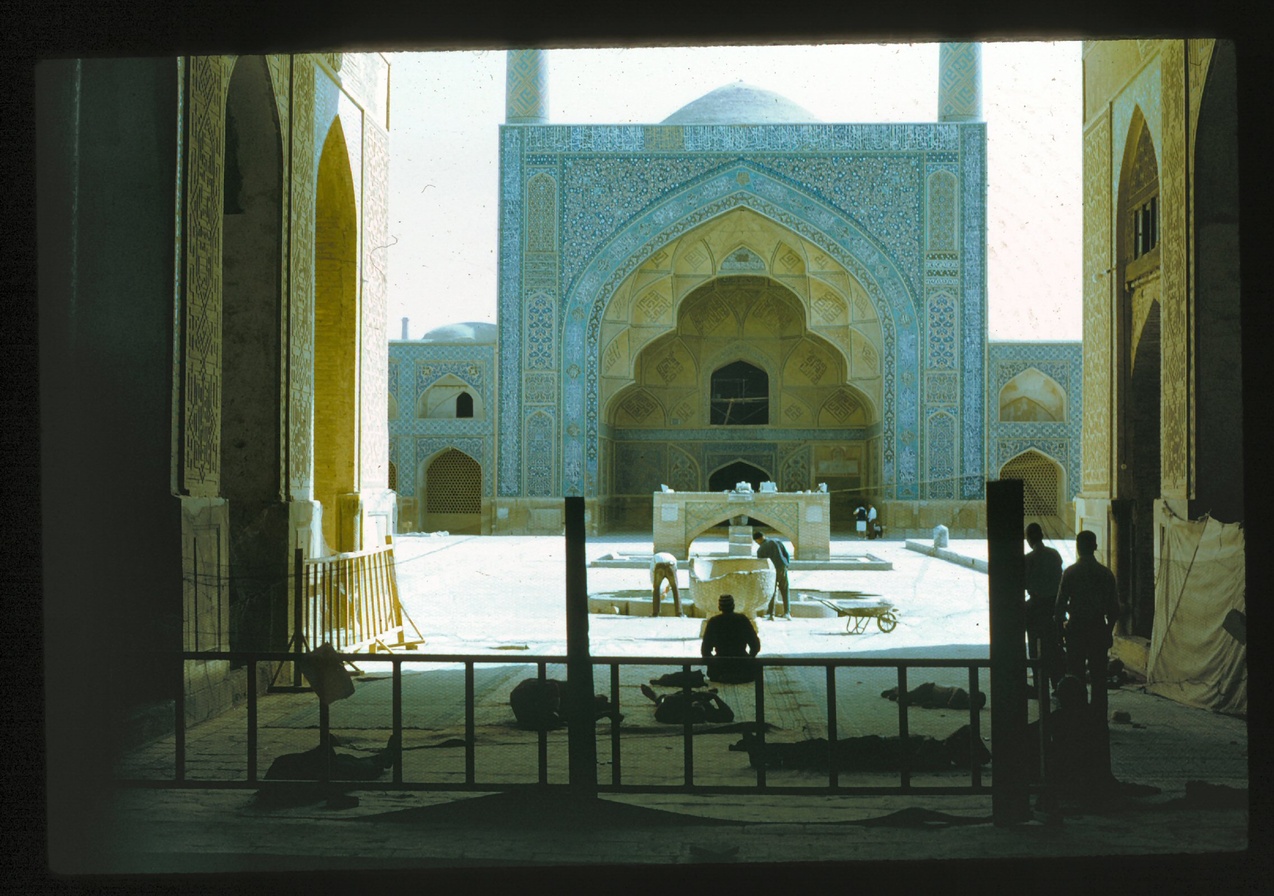
Isfajan
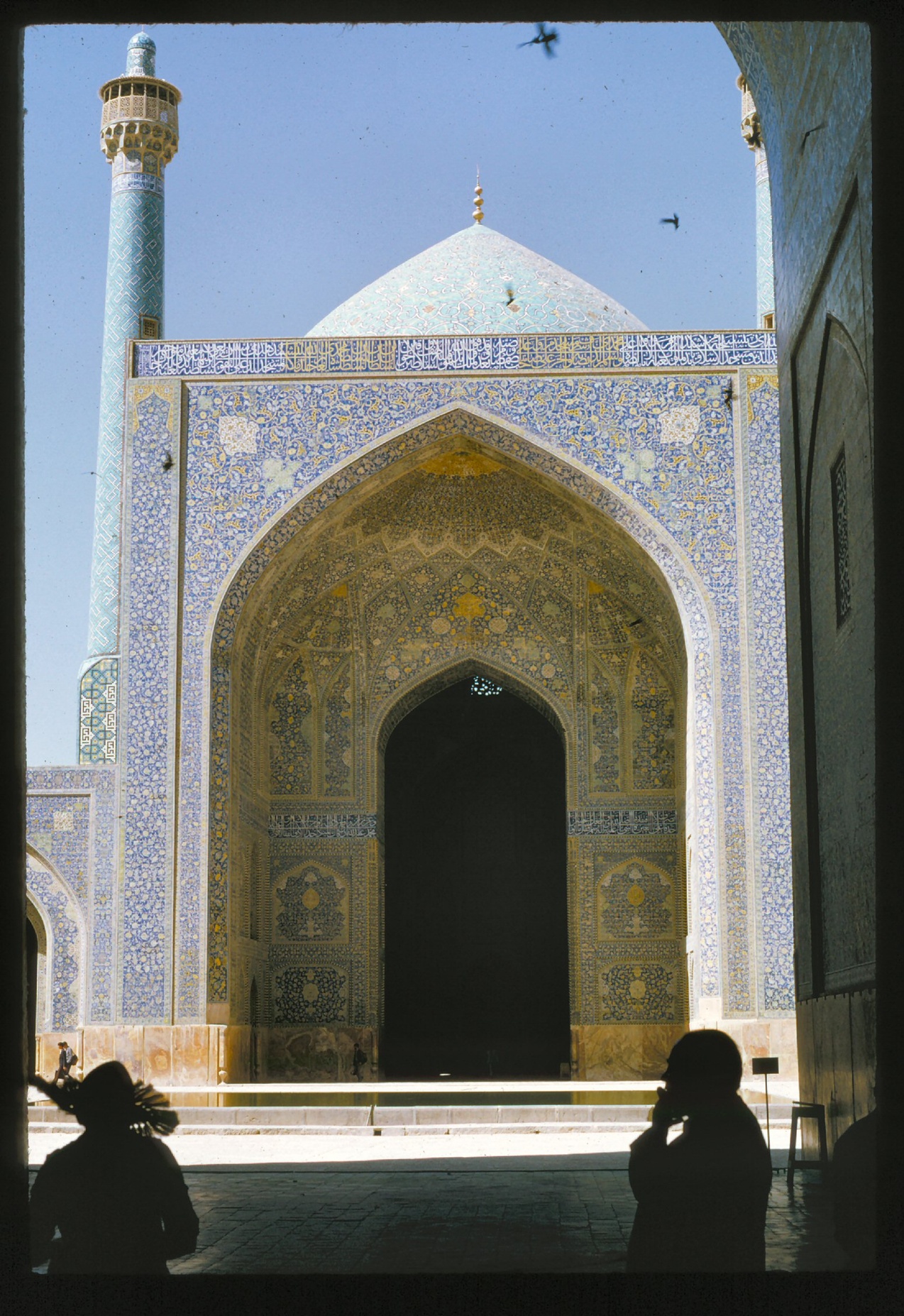
Jerusalem
In Jerusalem we ended up with a couple blocks of hours, and I wandered through ancient history, very narrow ancient streets, even the stations of the cross, the wailing wall, history alive. Tensions were high and security tight in May of 1973, just five months before the Yom Kippur War.
One immediate impression was about security. On arrival from Teheran, the security check to enter the country took two hours. Agents went through every suitcase. They checked ever toy, ever bottle, every box. Wrapped packages were unwrapped. We were all suspects.
One evening after dinner several of my tourists came to the beautiful hotel we stayed in, with a gorgeous view of the walls and the city, excited and full of their story. They’d taken a taxi down into the valley of the Dead Sea, which bordered on territory controlled by Palestinians. They walked out onto flats near the dead sea, apparently disoriented. They were captured by an armed car of Israeli soldiers and taken to a military installation, where they were treated like hostiles. Tension grew as the soldiers grew frustrated with their disoriented reactions. Only three of the five spoke English. Being Mexican, they were dark of complexion like Palestinians, but they weren’t. “Jews,” the soldiers shouted, asking whether they were Jewish tourists. “Jews,” they insisted, repeatedly, growing steadily angrier.
“Thank you, tomato,” answered the one in the group who was completely hopeless with English. There was a pause, and then laughter. The soldiers ended up driving them the hour’s drive back up out of the Dead Sea area to their hotel in Jerusalem.
The horse is a view from my hotel room in the Intercontinental Hotel, on a hill looking over the old city. The camel and jeep are from a parking lot in the hotel.
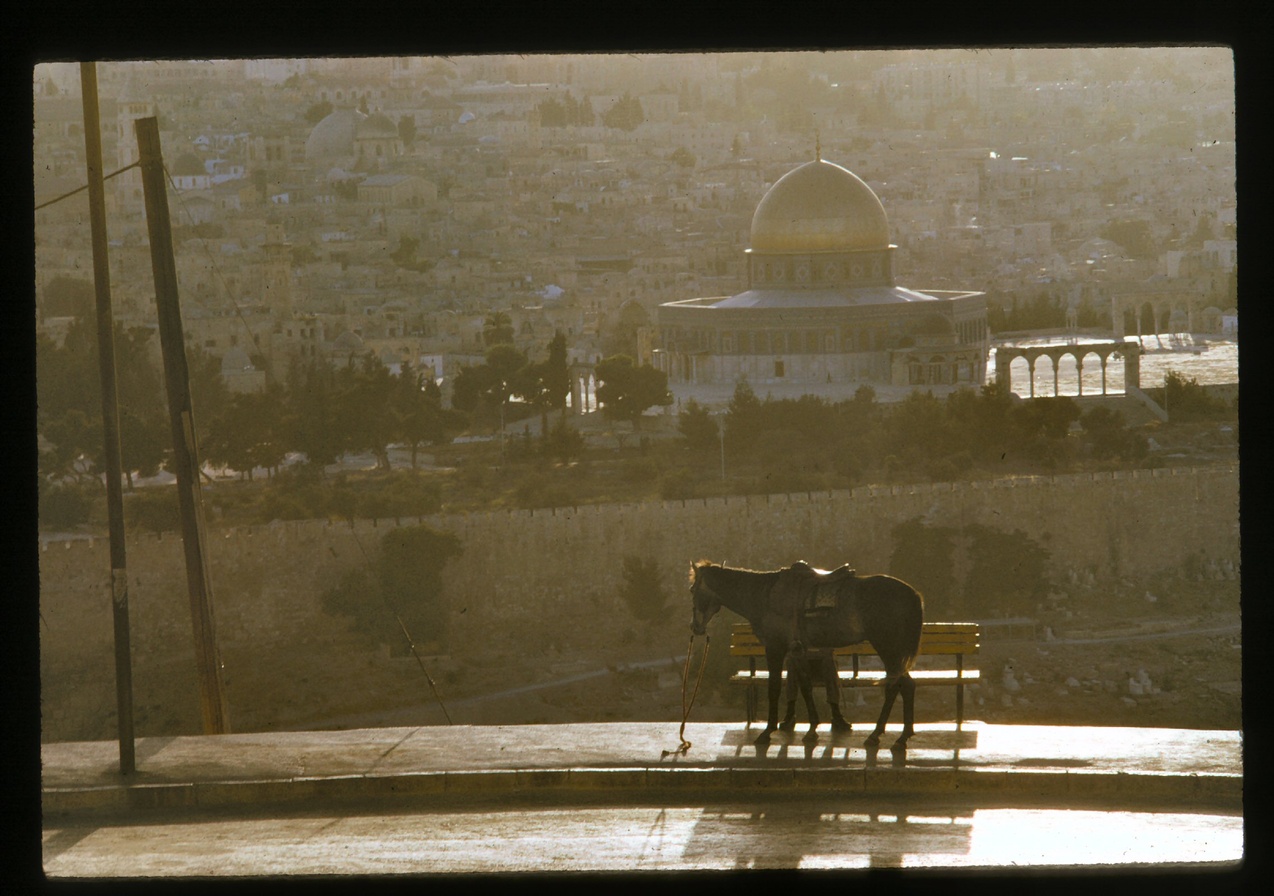
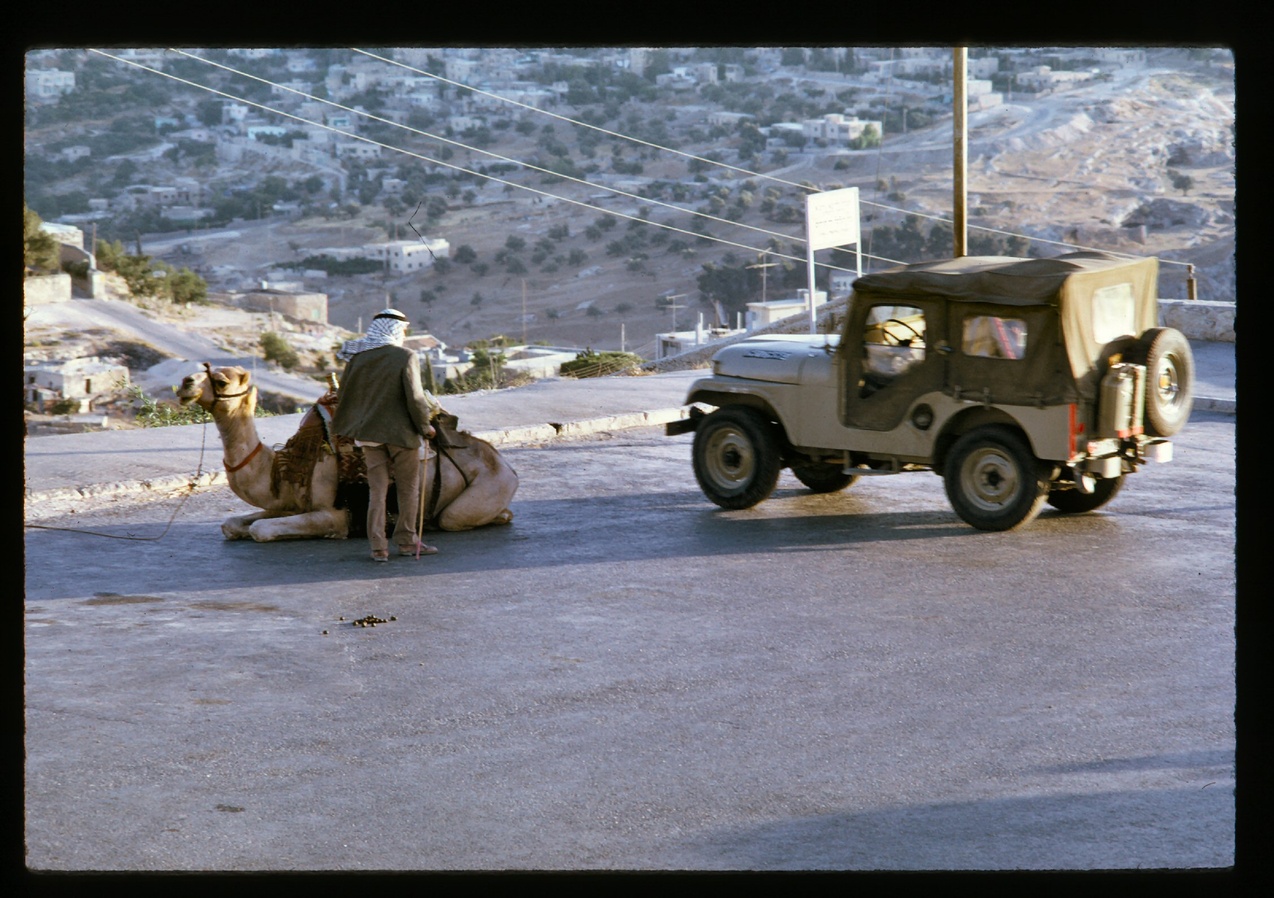
This is from the old city, along the route of the stations of the cross. By this time, two third of the trip gone, I was getting used to finding time to get away from the group and take long walks on my own.
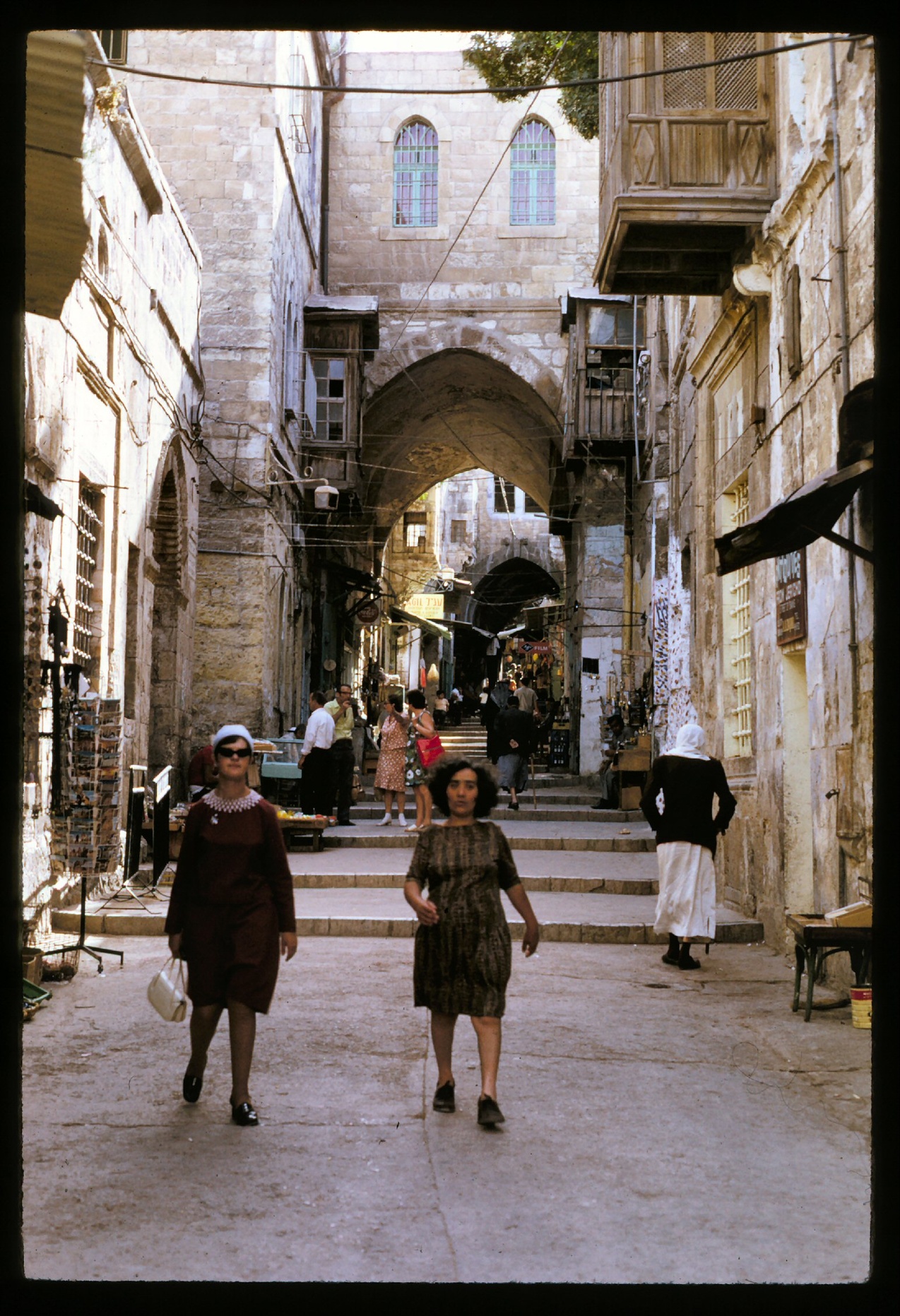
Another view from the hotel.
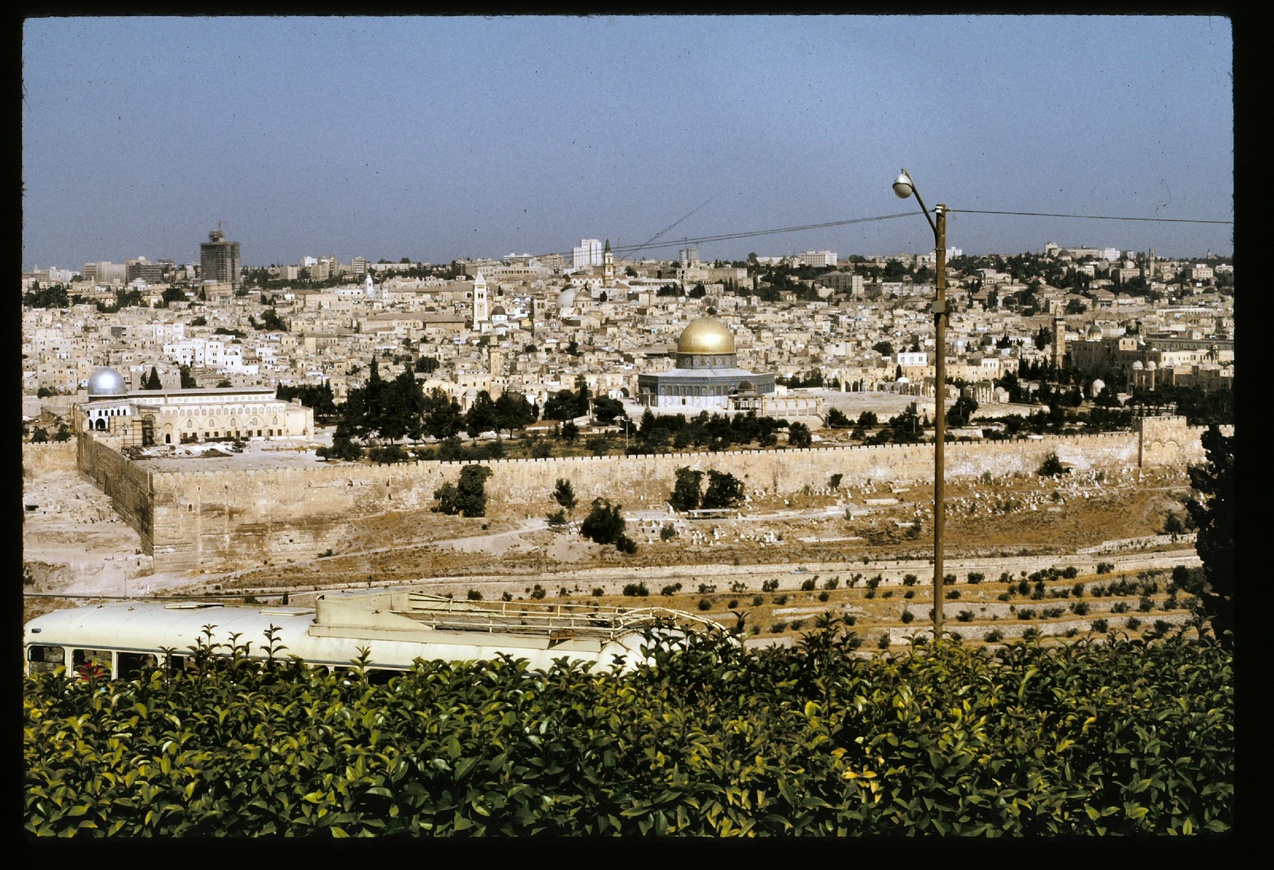
Outside of Jerusalem, on the road to the Dead Sea.
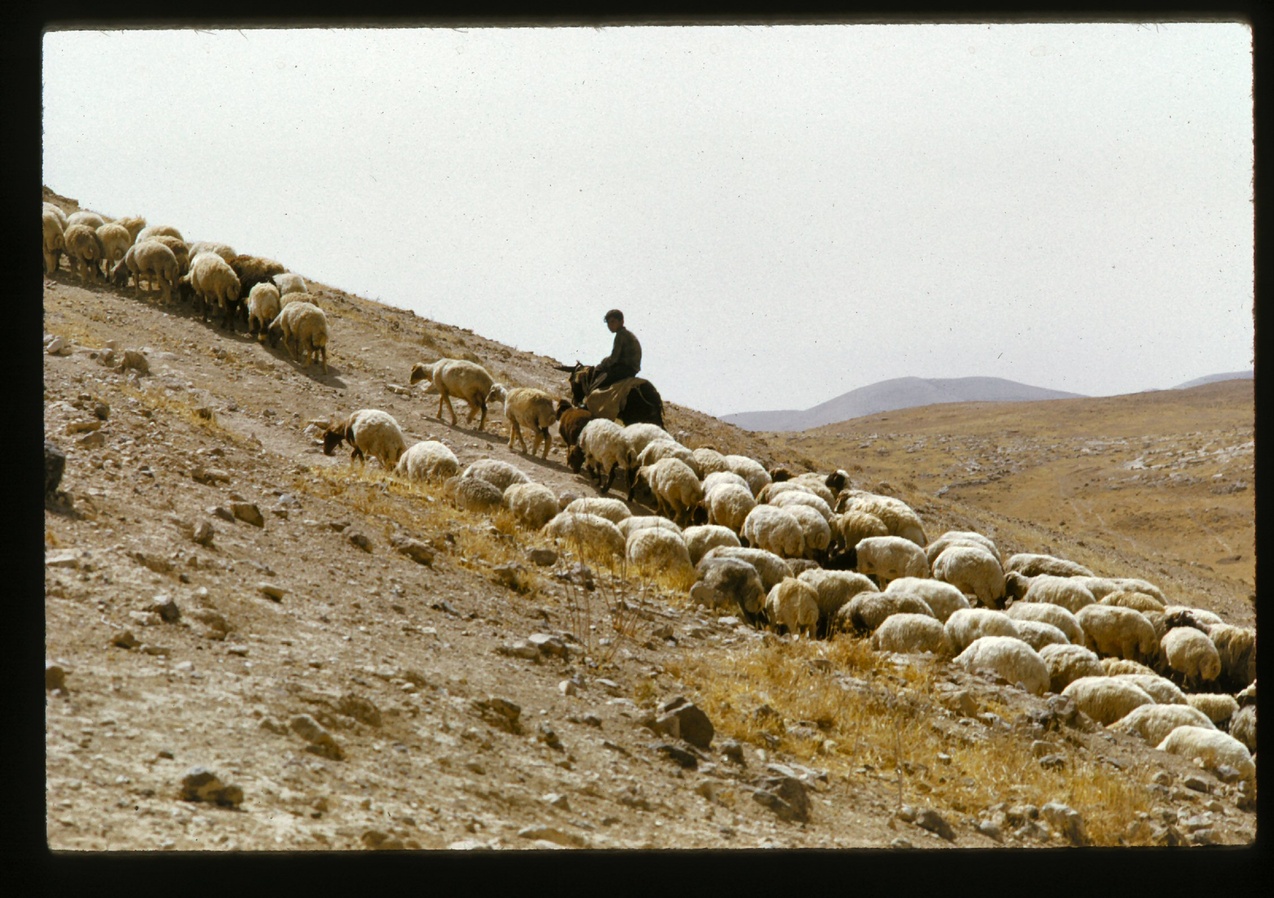
Istanbul
Istanbul, as we neared the end of the trip, was the first place of all of them where I had actually been before, and, therefore, I wasn’t forced to fake it.
And that made it even easier for me to escape more on my own, take more long walks, and enjoy the travel more. I was a journalist, I’d taken a couple of courses on photo journalism, I had a brand new beautiful SLR camera, so on my walks I’d look for photos. And in the mornings, and evenings.
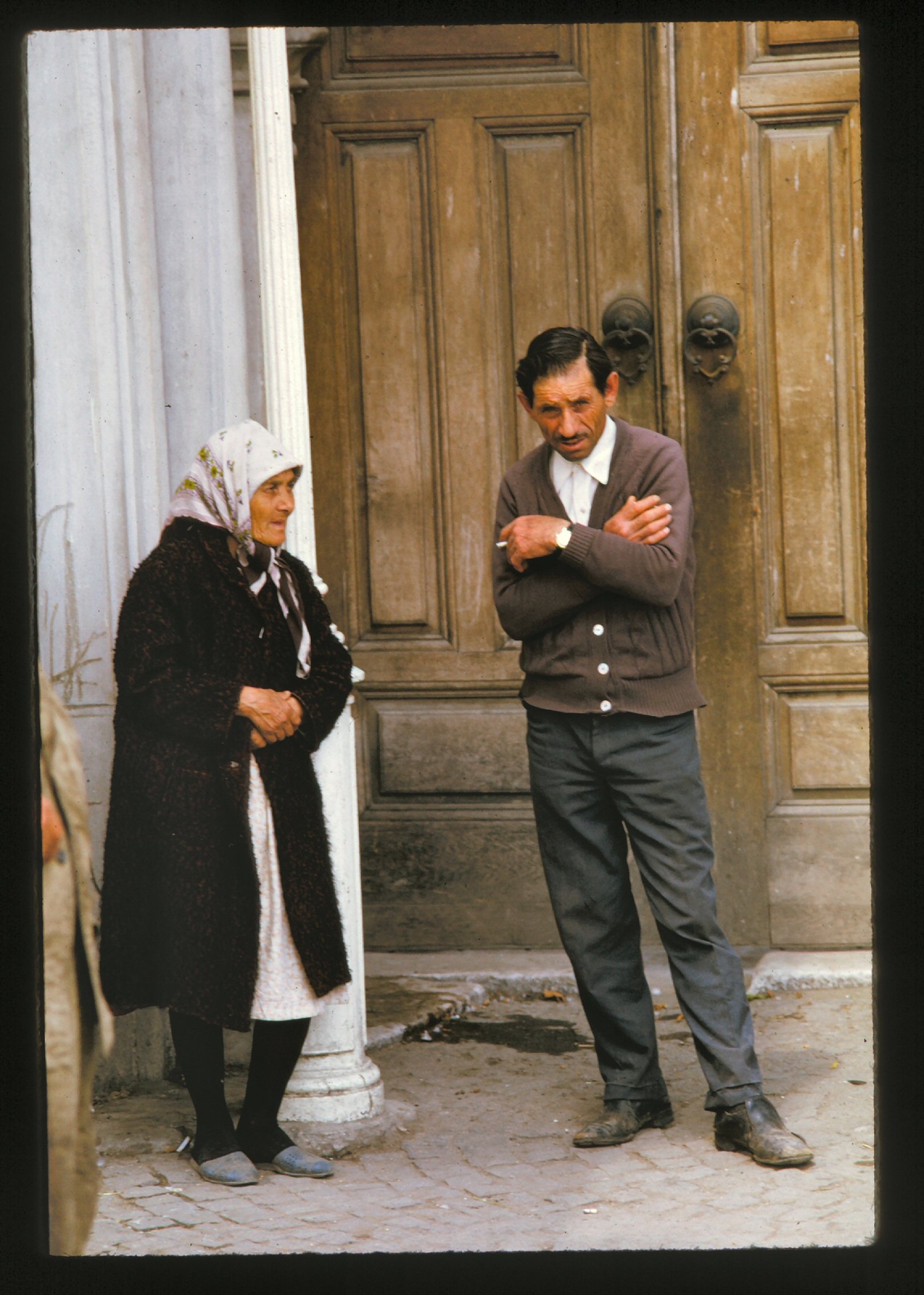
Istanbul
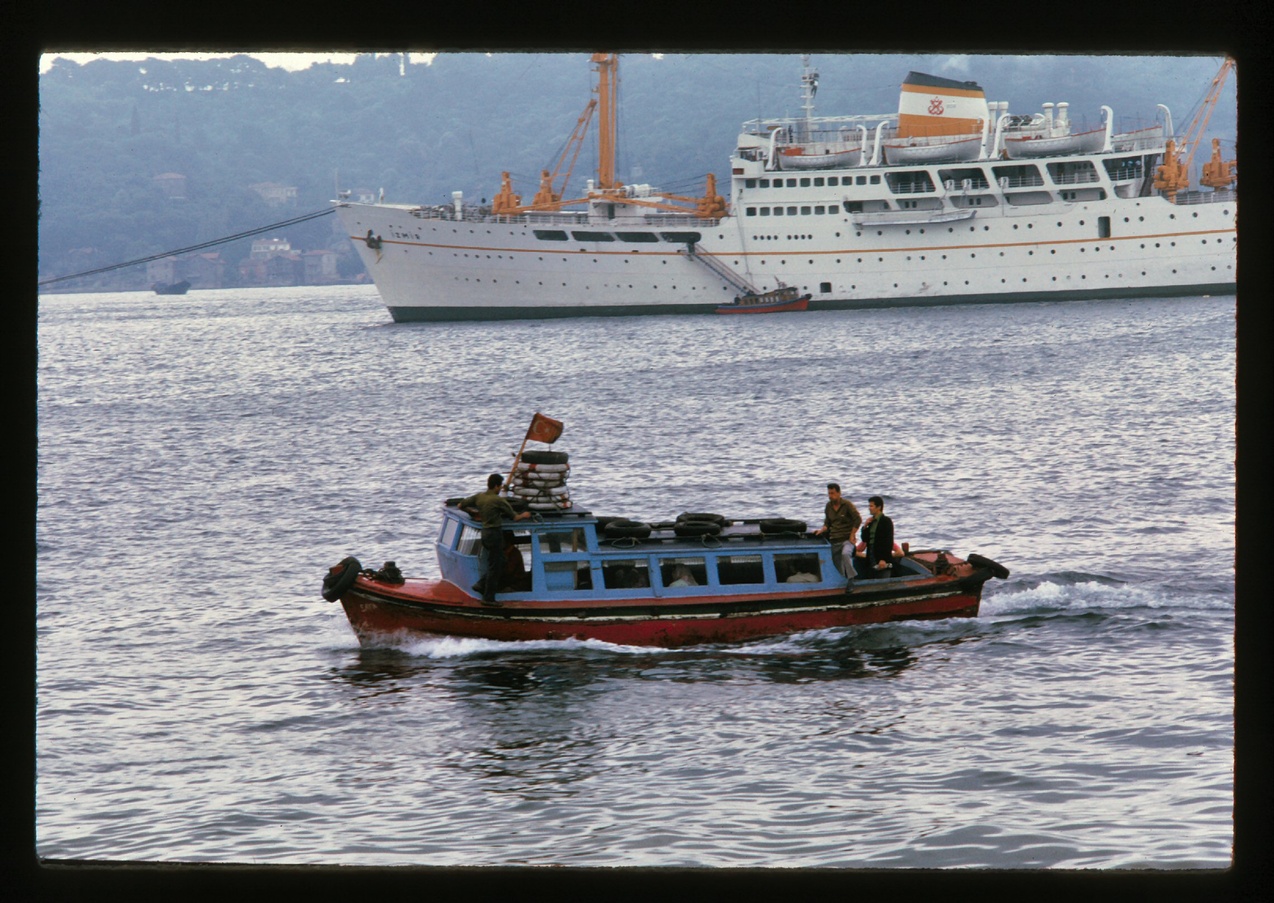
Why do I find the water, and ships on the water, so interesting? In Istanbul we had a hotel outside of the main city, along the Bosporus, with a view of the ships going by.
I took lots of pictures of the view from my room.
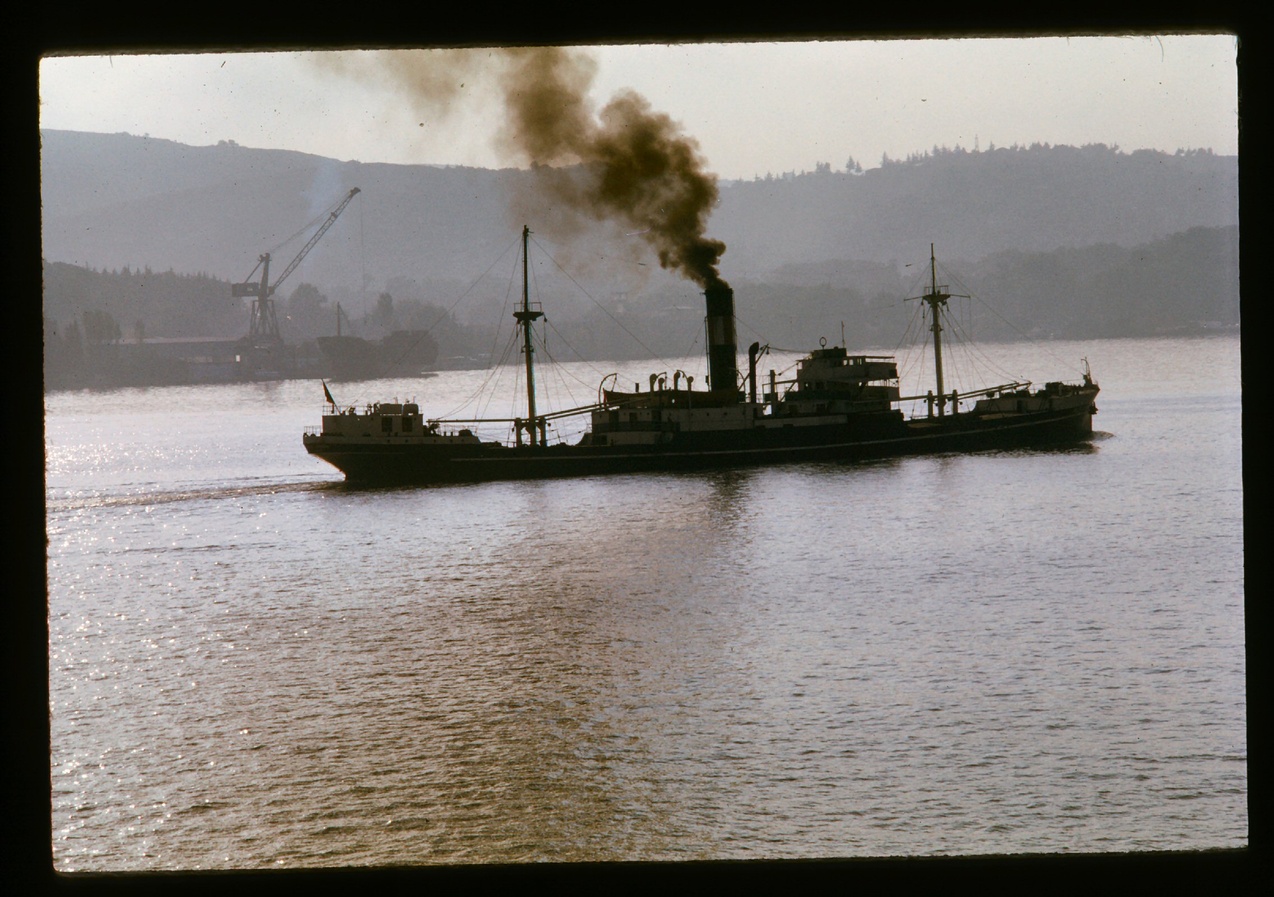
Istanbul
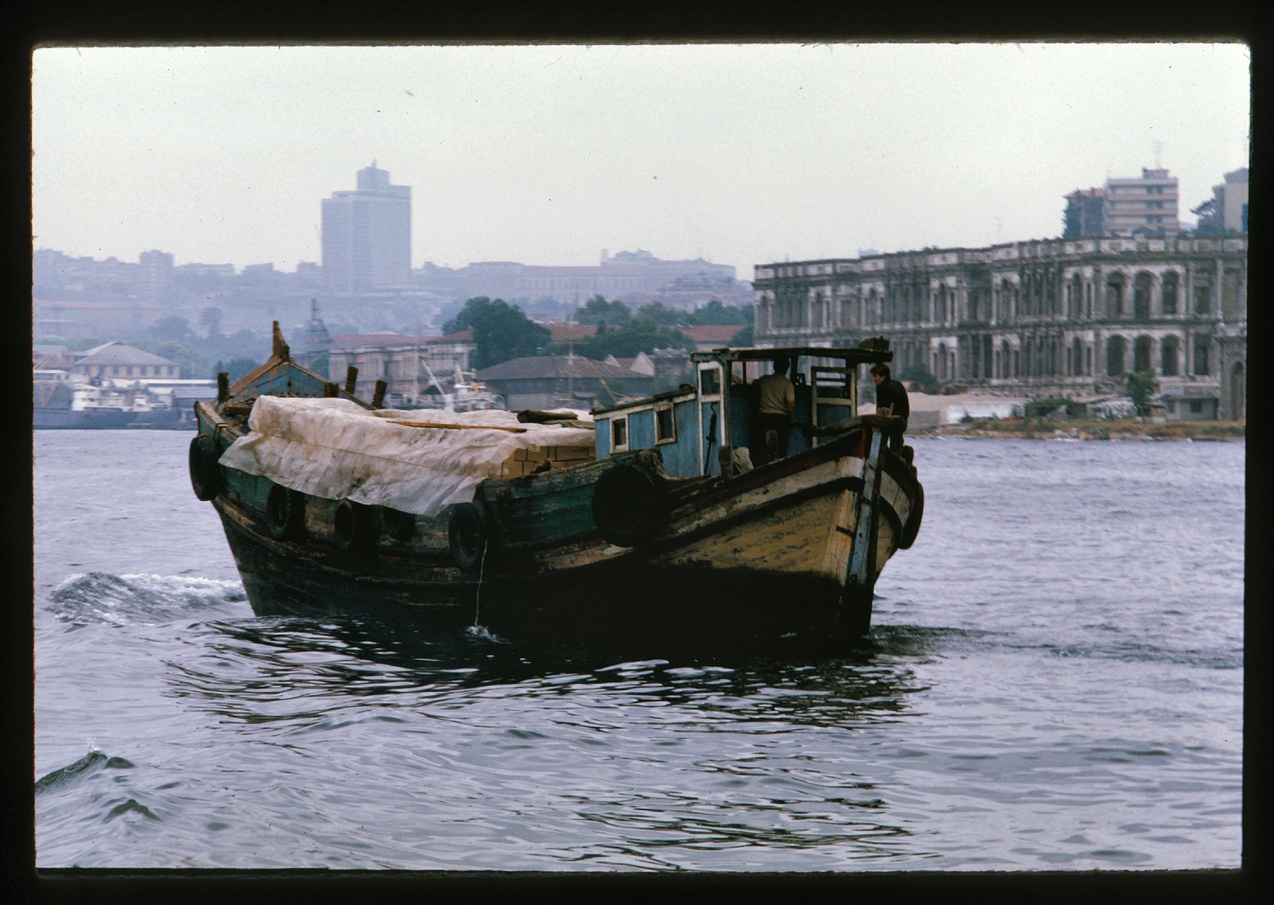
Istanbul

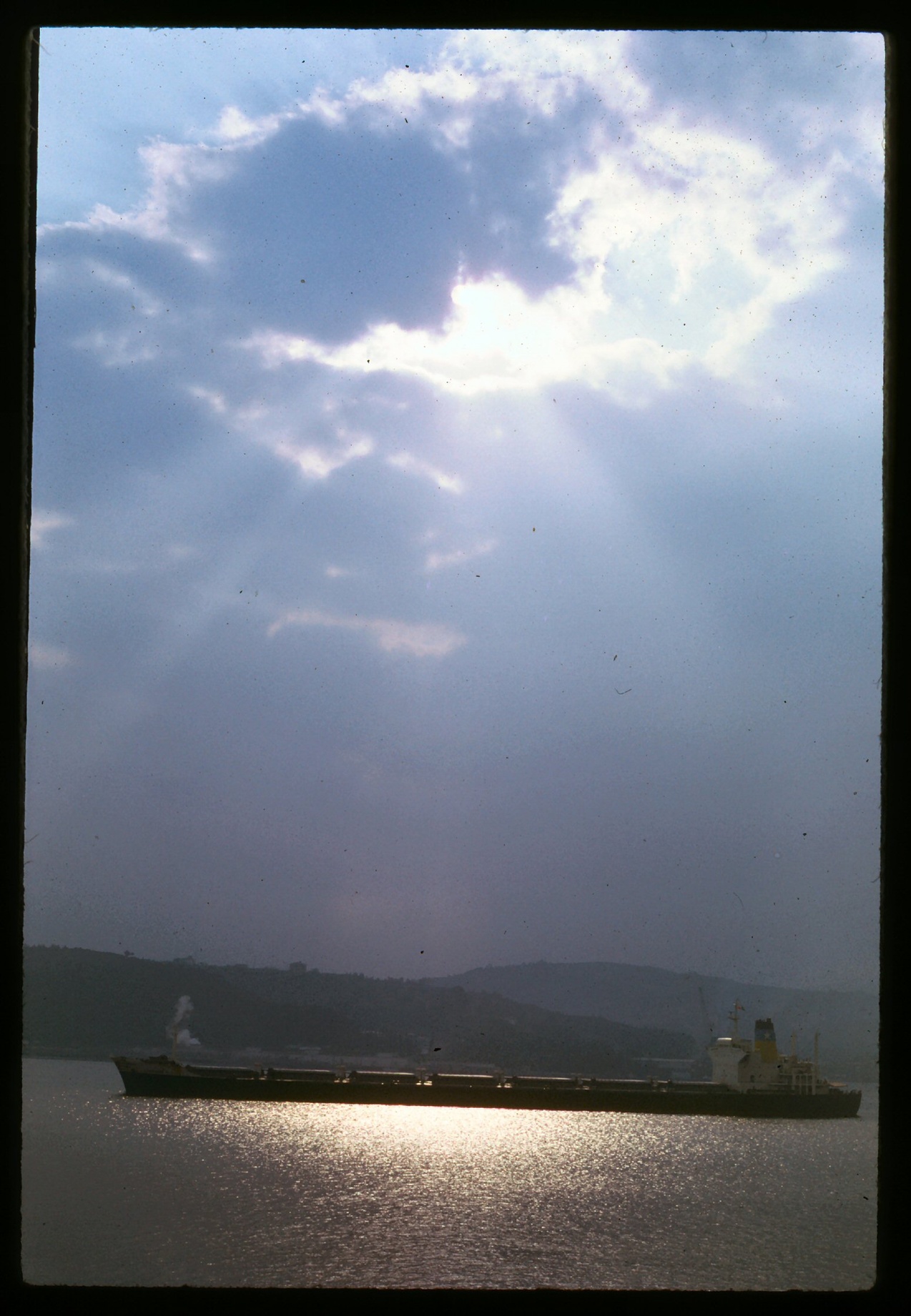
A small harbor outside of Istanbul.
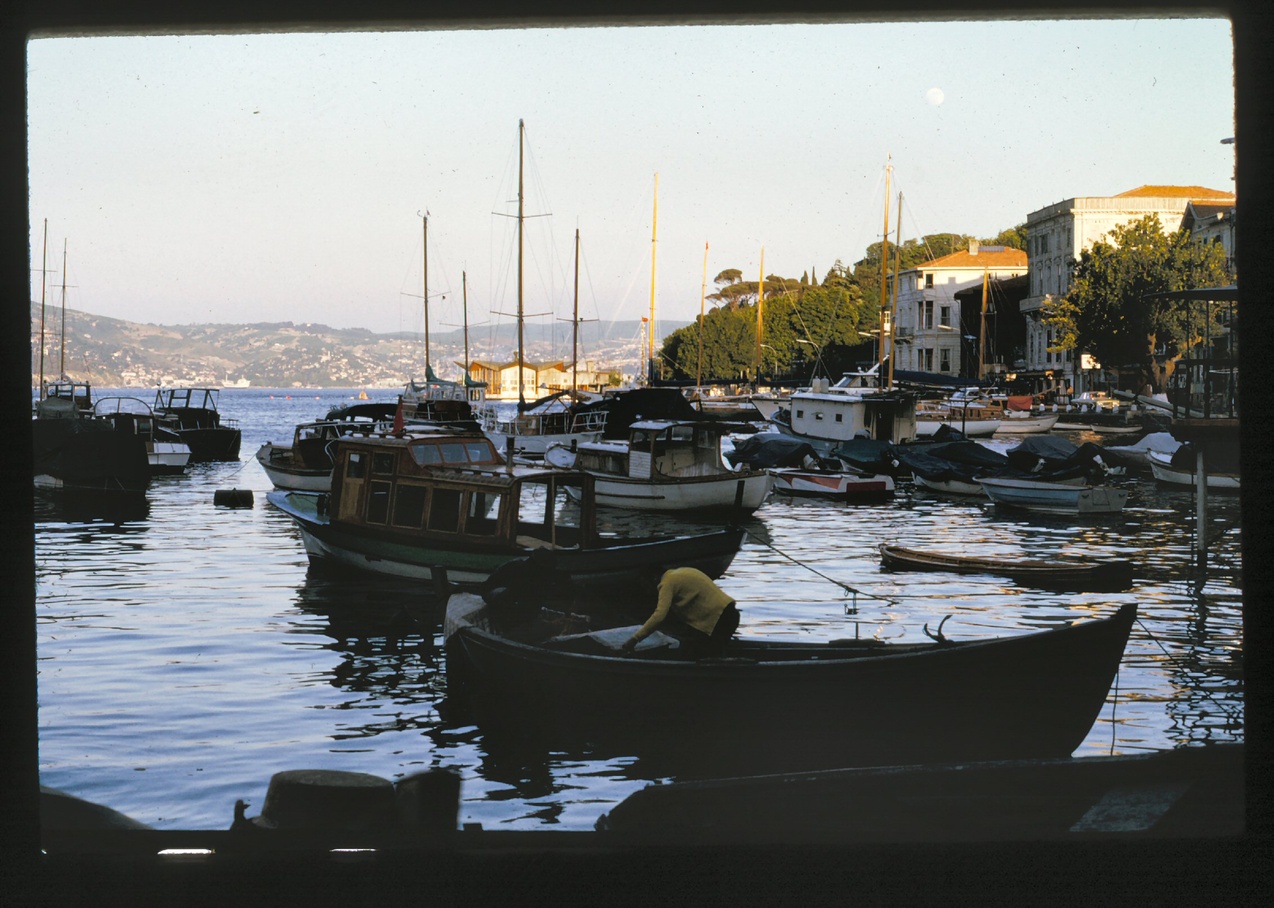
Athens.
I was so young, at 25. So much in love with my wife and missing her and my baby, Laura. Athens started to feel like the last stretch, finishing the trip. A gorgeous place, so again, I got off on my own for pictures.
By the way, the Parthenon was still accessible. It’s now completely blocked off to normal tourists. But in 1973 we could walk around at will.
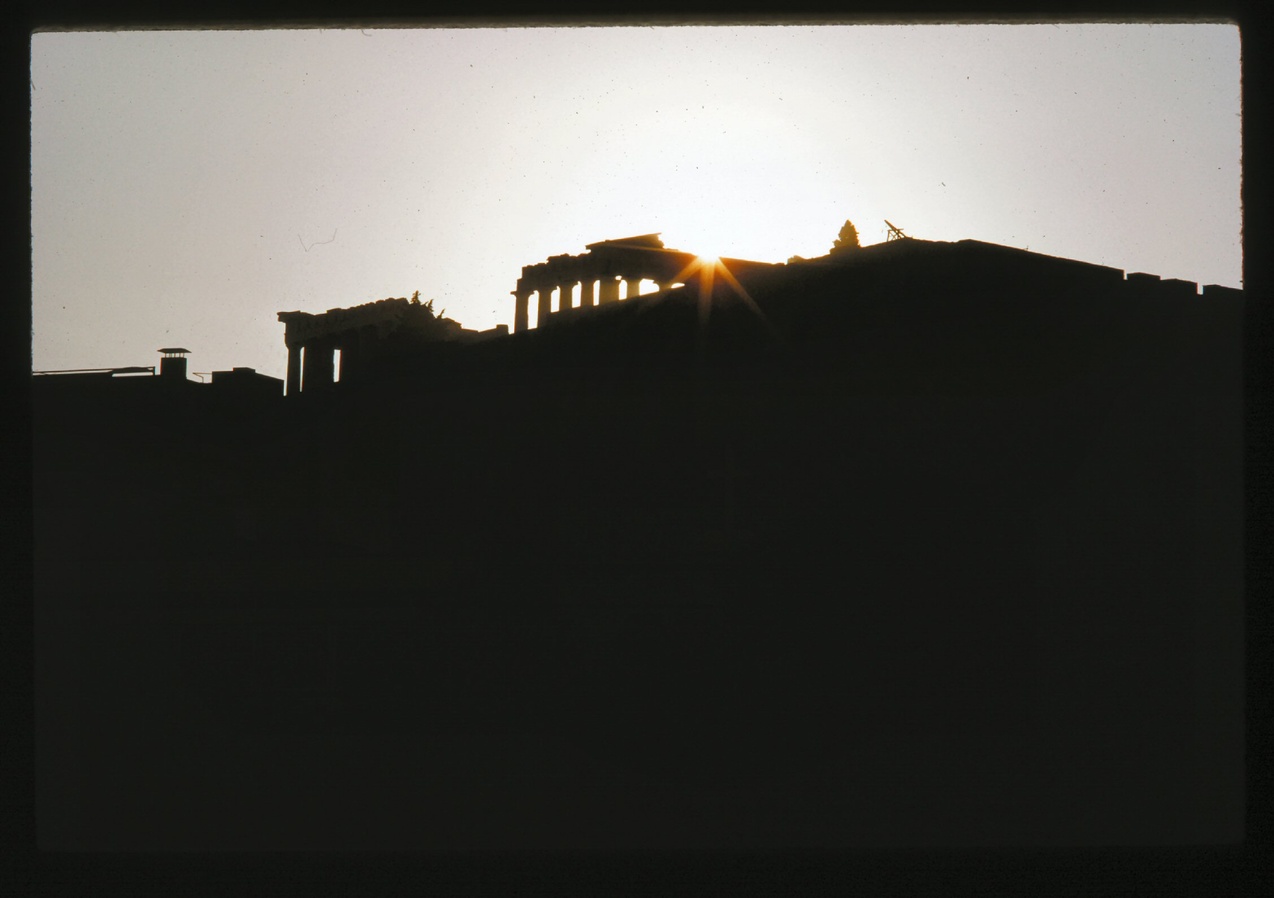
Athens
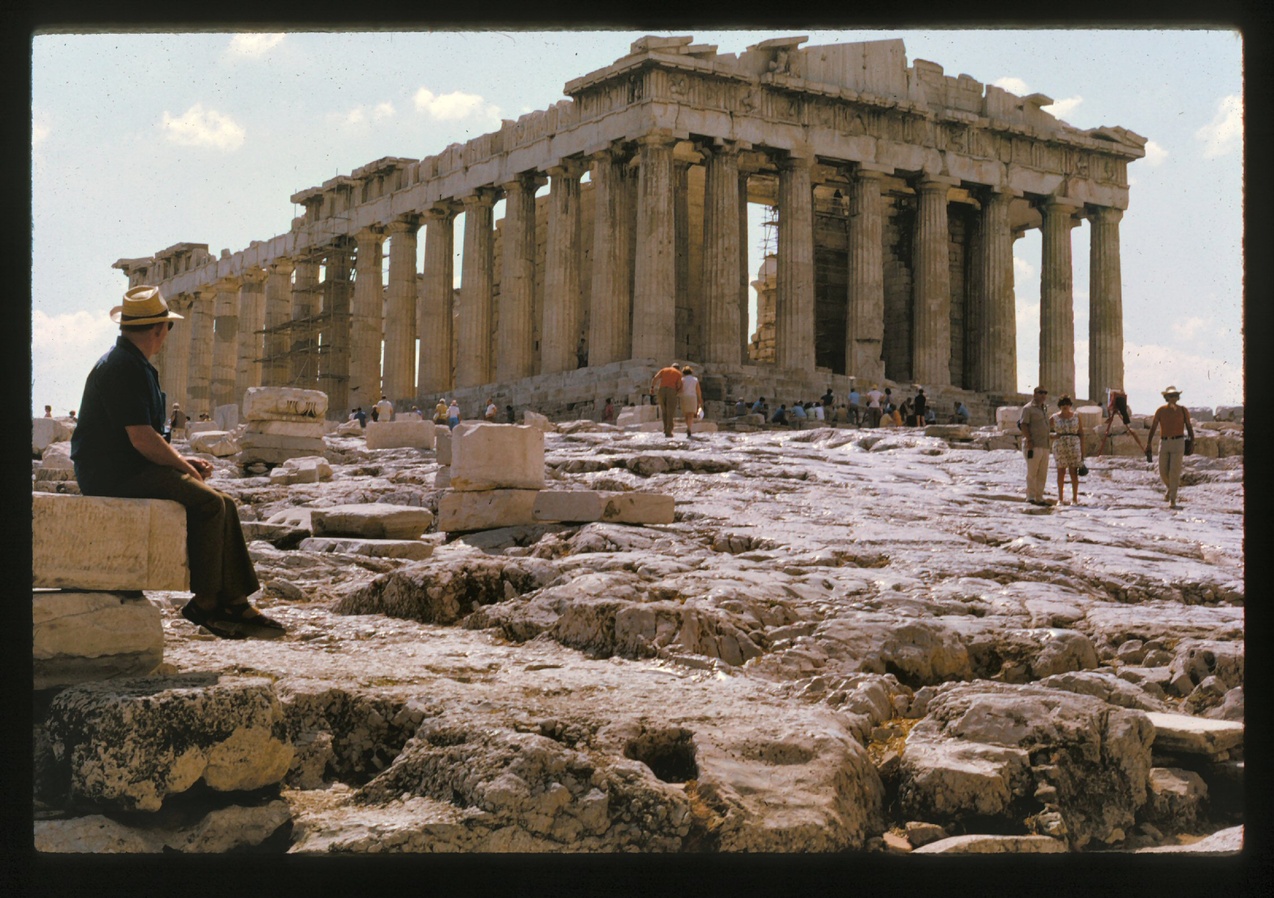
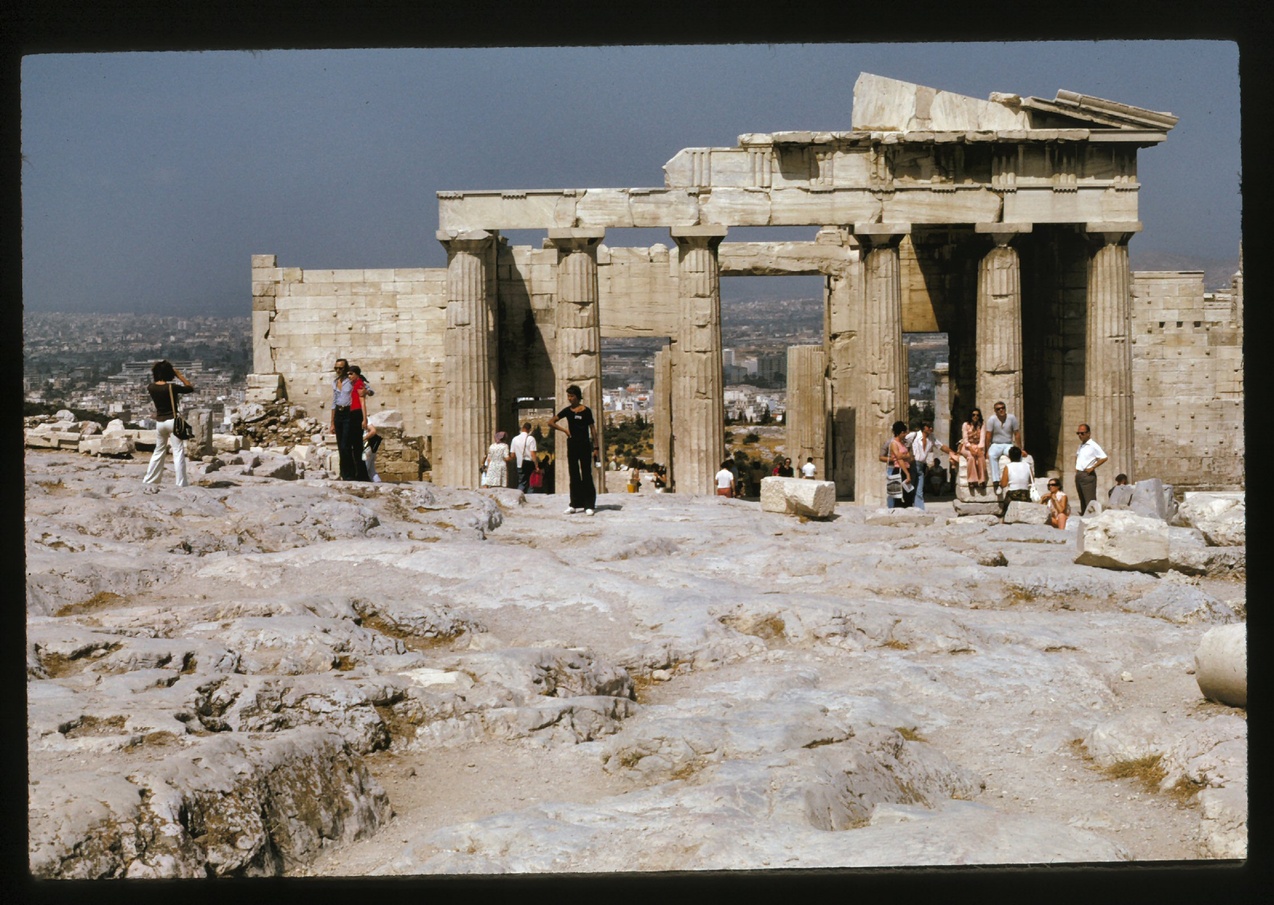
Athens
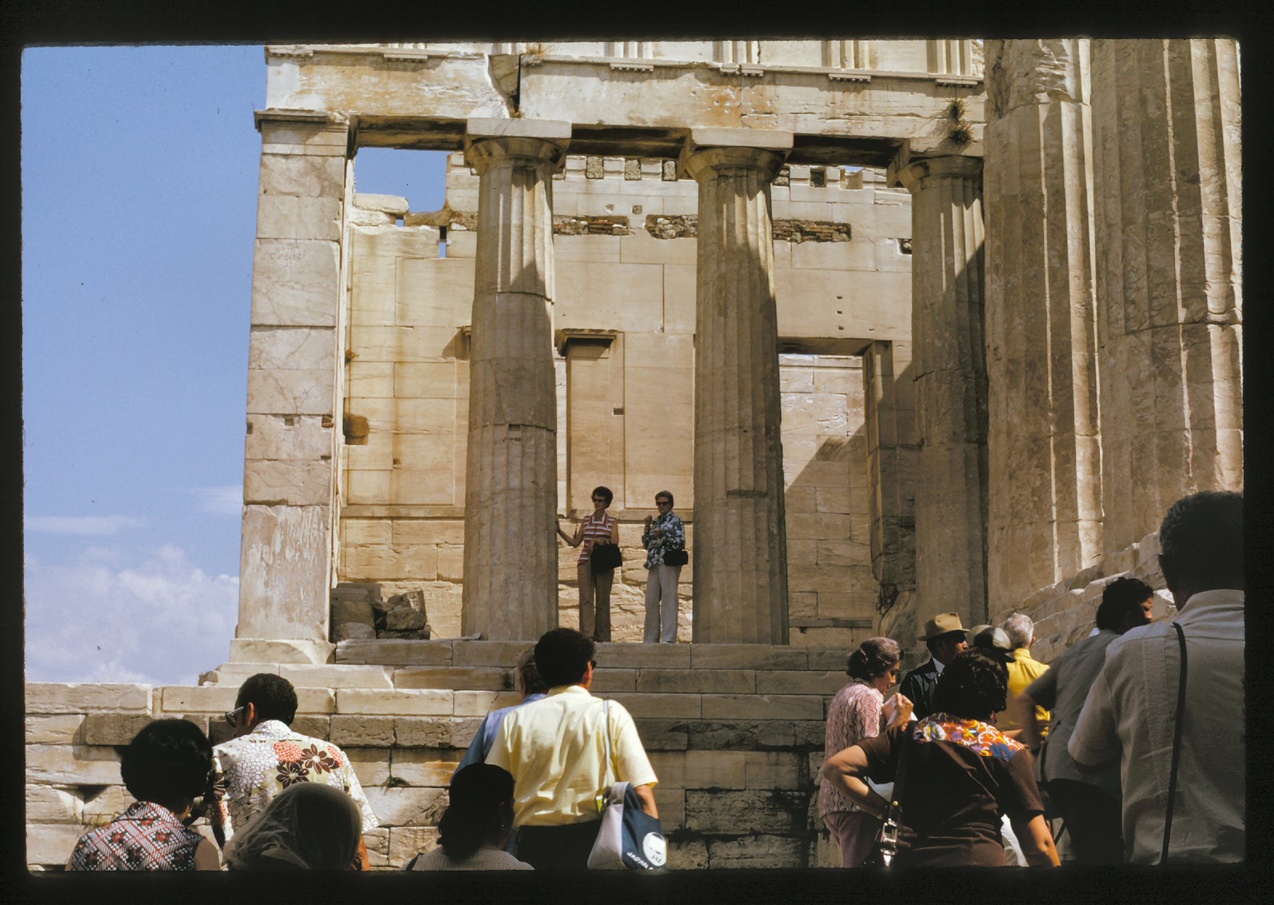
Paris
And then, finally, Paris. My third visit to Paris. And from there, back home to Mexico City.
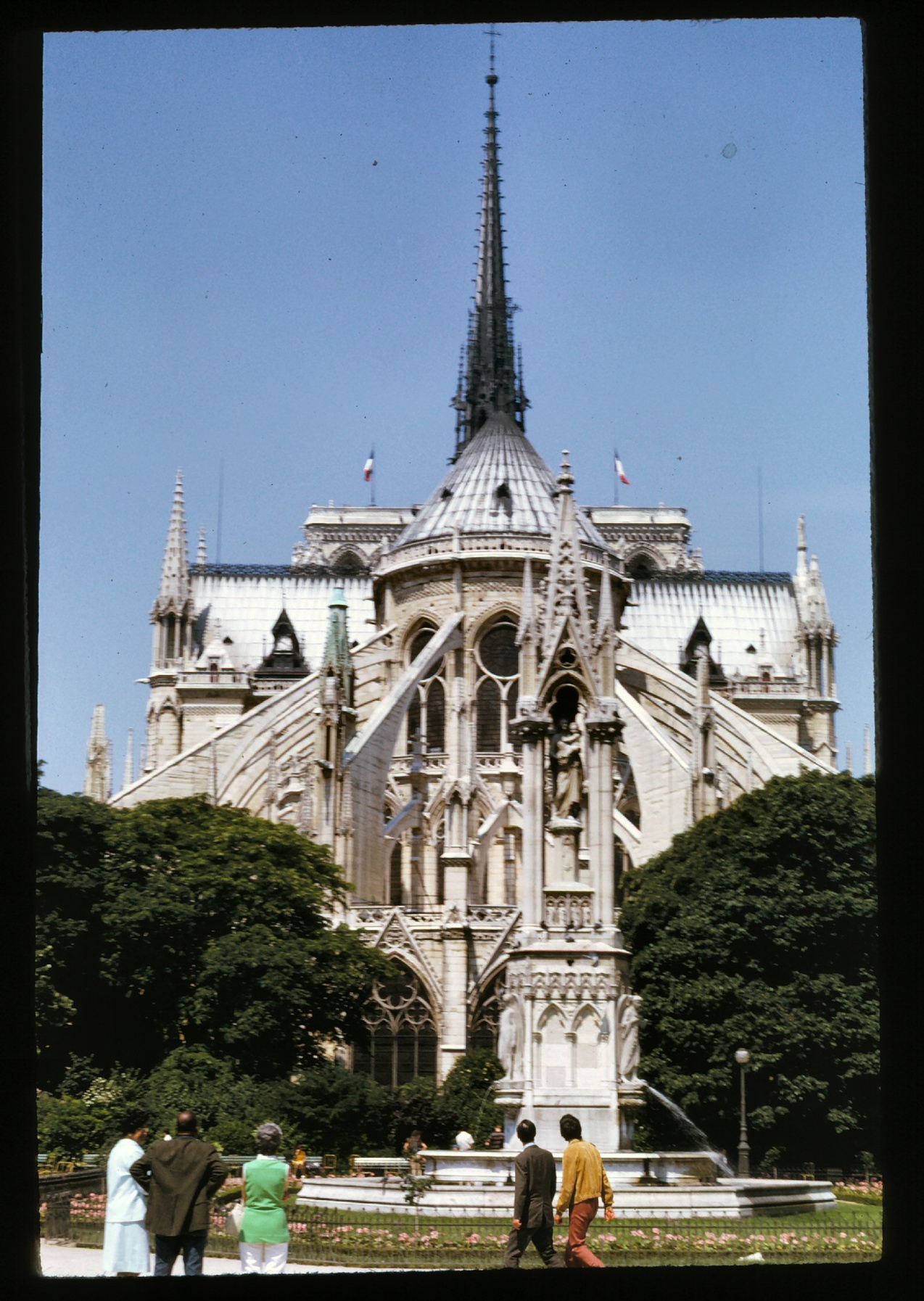
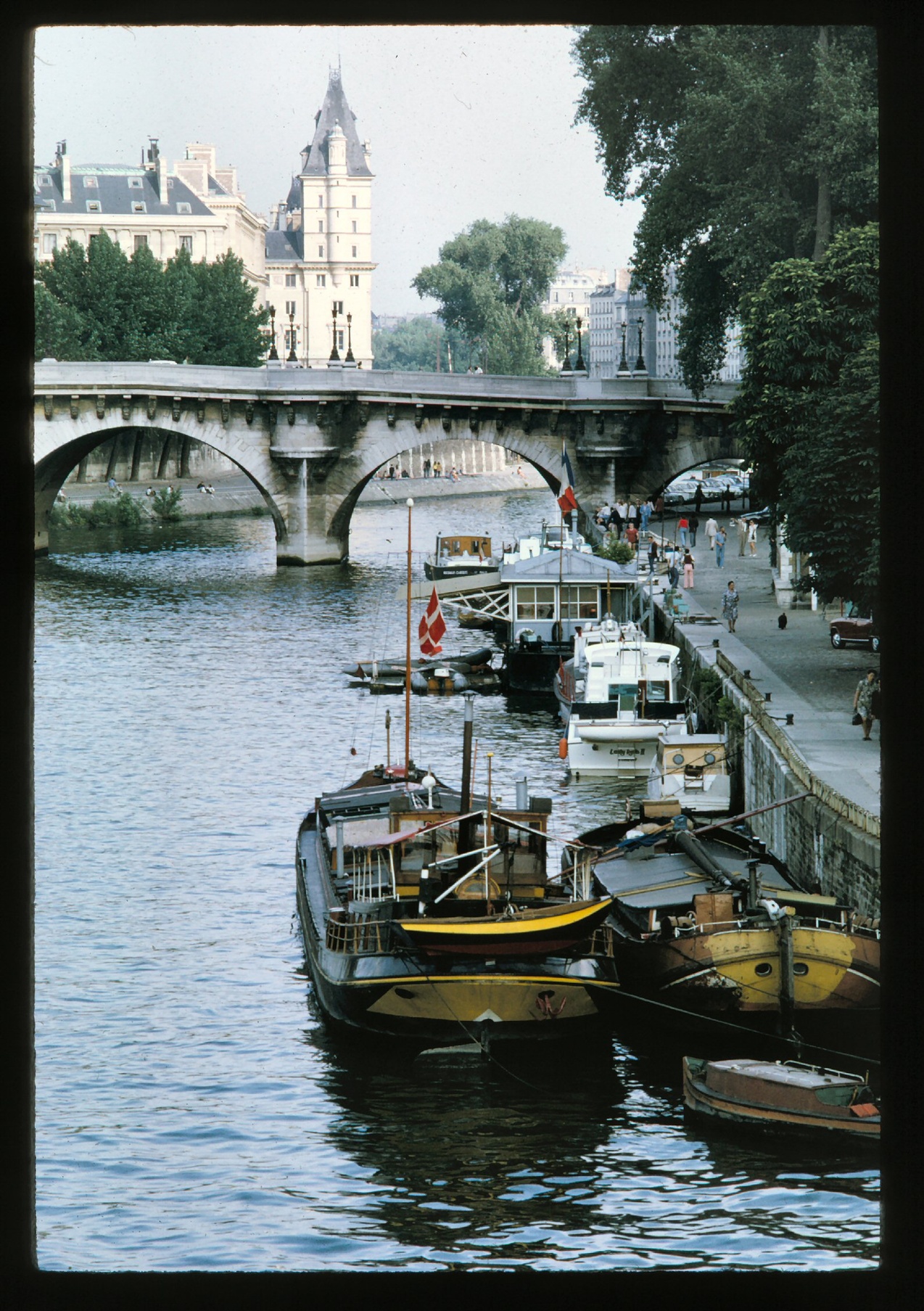
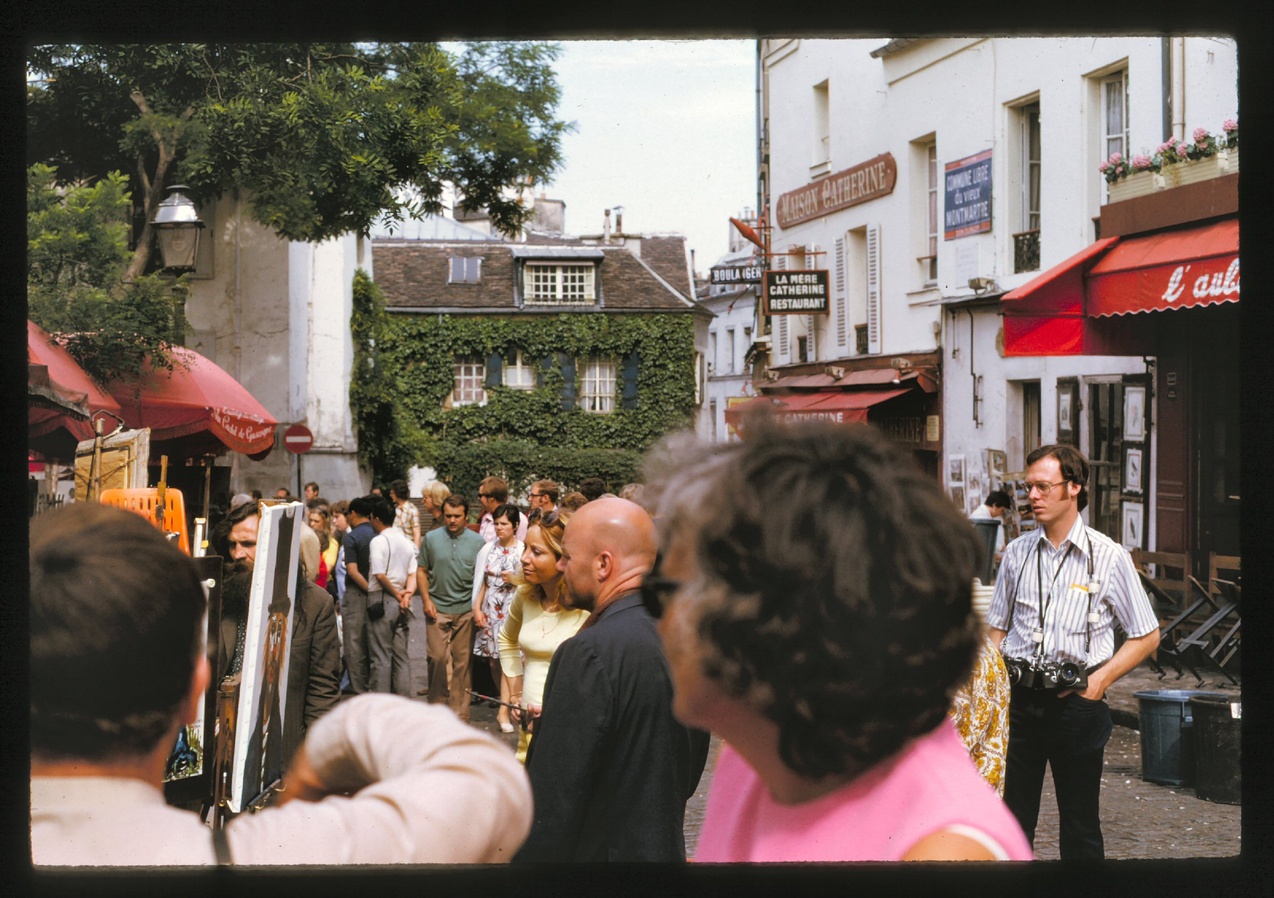
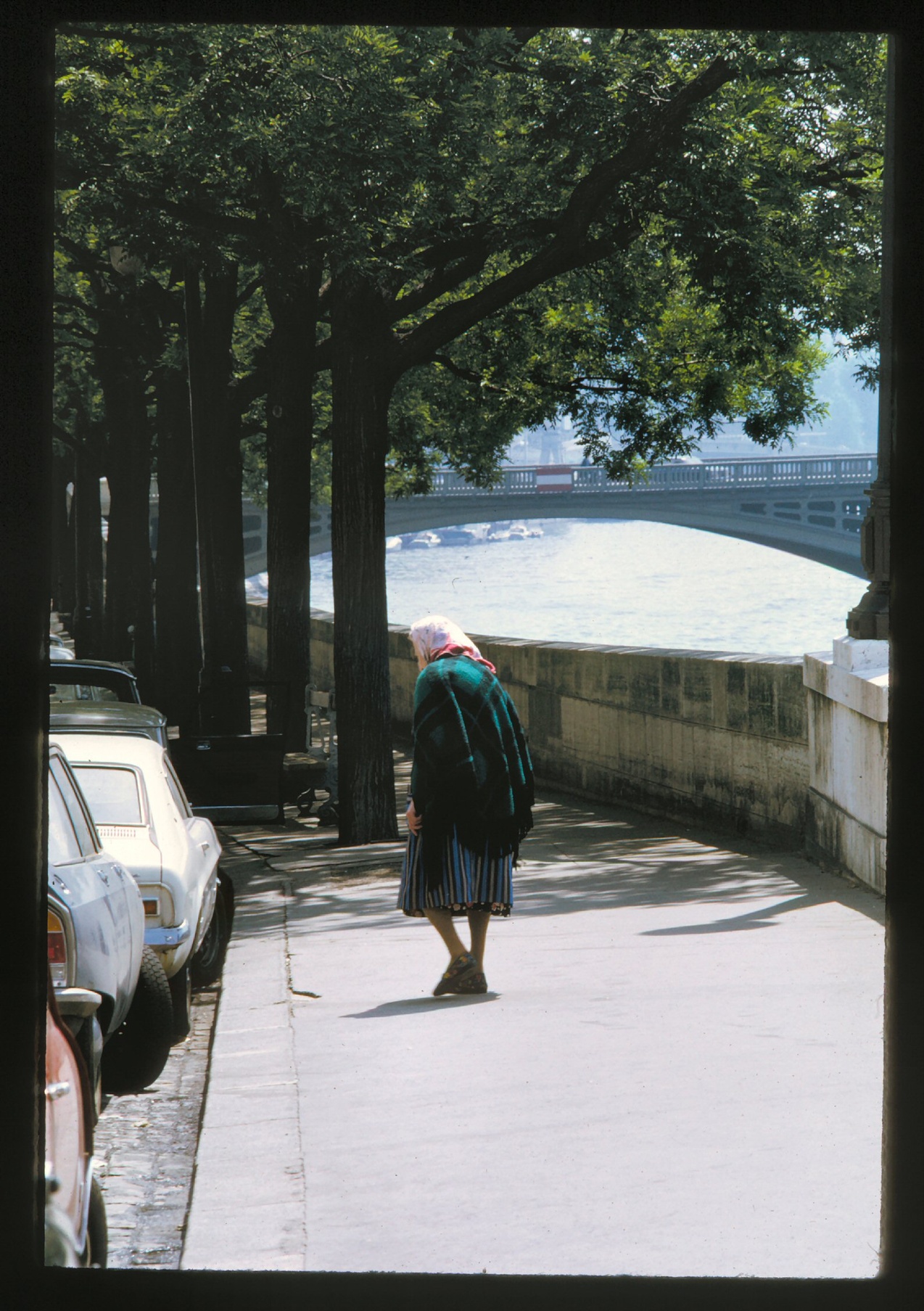
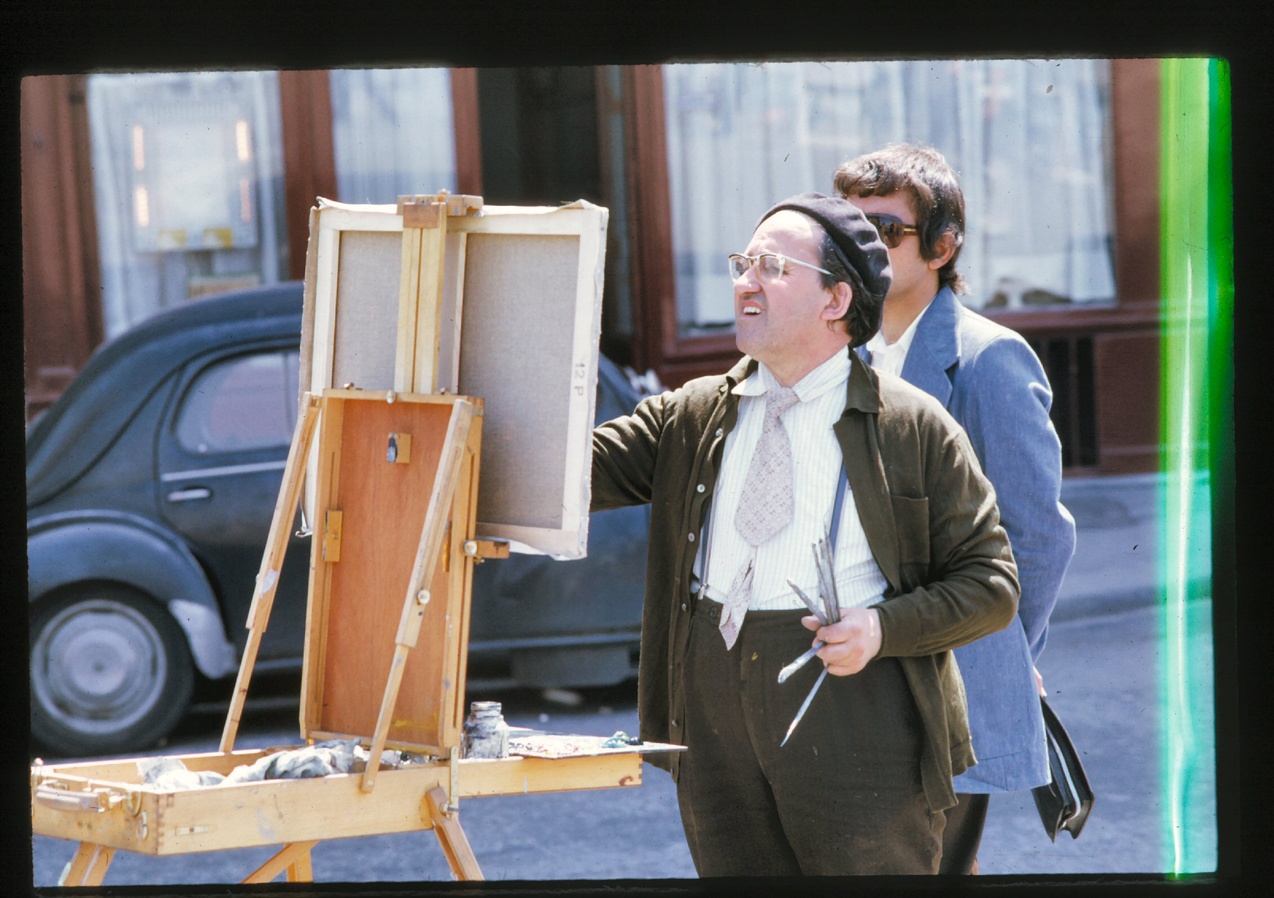
And then, a long flight home. As I look back, 40-some years later, I’m sheepish admitting that during my first trip around the world, I missed Vange and home. But that was the 1970s, we were young, with young kids, and Mexico City and all; life was really good.

